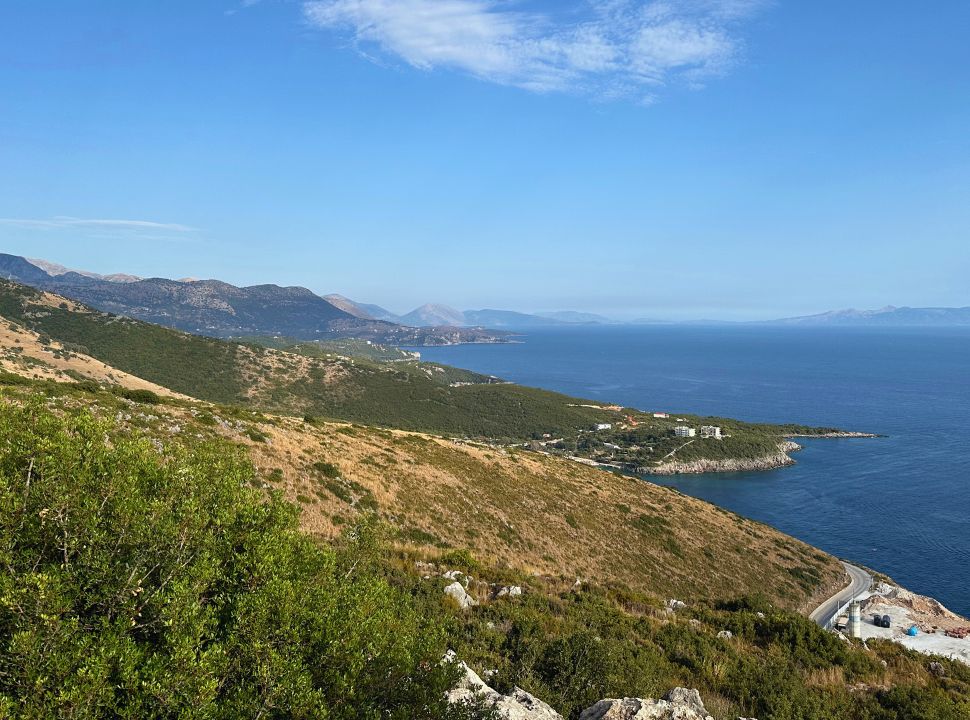Is Albania Worth Visiting in 2025? The REAL Deal, No Fluff
Not sure if Albania is worth visiting? Let us help you decide!
Albania had been on our travel list for many years. The images of stunning coastlines, breathtaking mountains, wild landscapes, and charming traditional villages intrigued us.
But is Albania really worth visiting, or is it just another overrated spot that looks better on social media than in real life?
I had the same questions before I packed my bags. I’d heard about the Albanian Riviera, the Accursed Mountains, and the hidden gems people said were still untouched. But I also heard about chaotic roads, overpriced beach clubs, and areas struck by overdevelopment.
So, what’s the deal? In our opinion, Albania is worth visiting but only if you do it right.
In this guide, I’ll break down the best (and worst) parts of traveling in Albania, where to go, what to avoid, and how to make the most of your trip. If you’re planning your first time in Albania, you’ll want to read this before you book those flights!
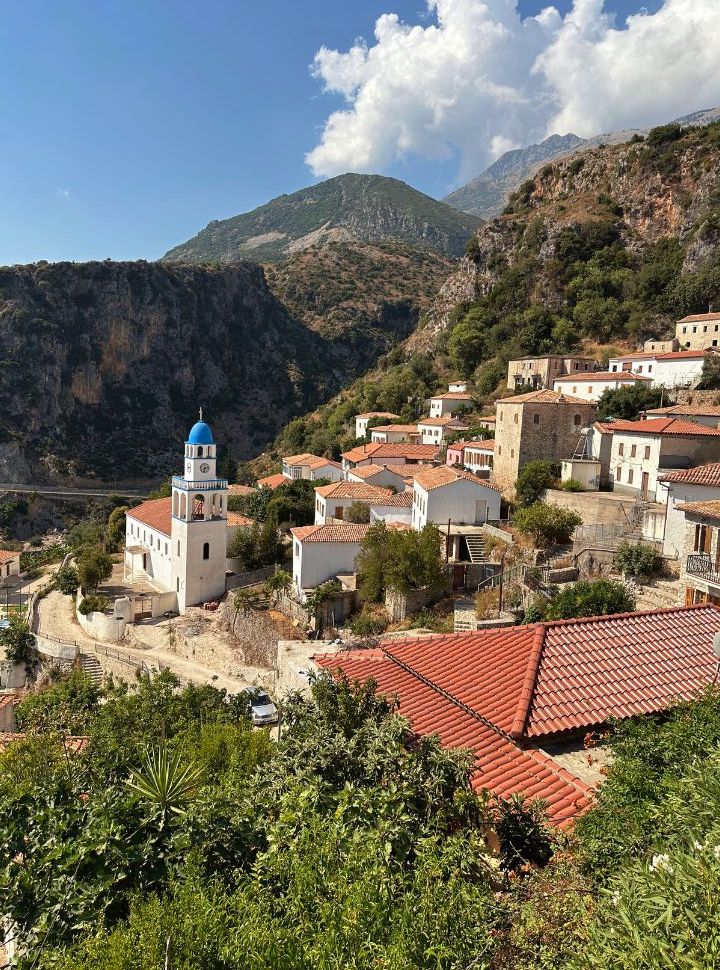
The Good: Reasons Why Albania Is Worth Visiting
Albania is a beautiful country and if you’re up for adventure, stunning landscapes, and a road trip unlike any other, Albania is a great place to explore.
1. Spectacular Natural Beauty
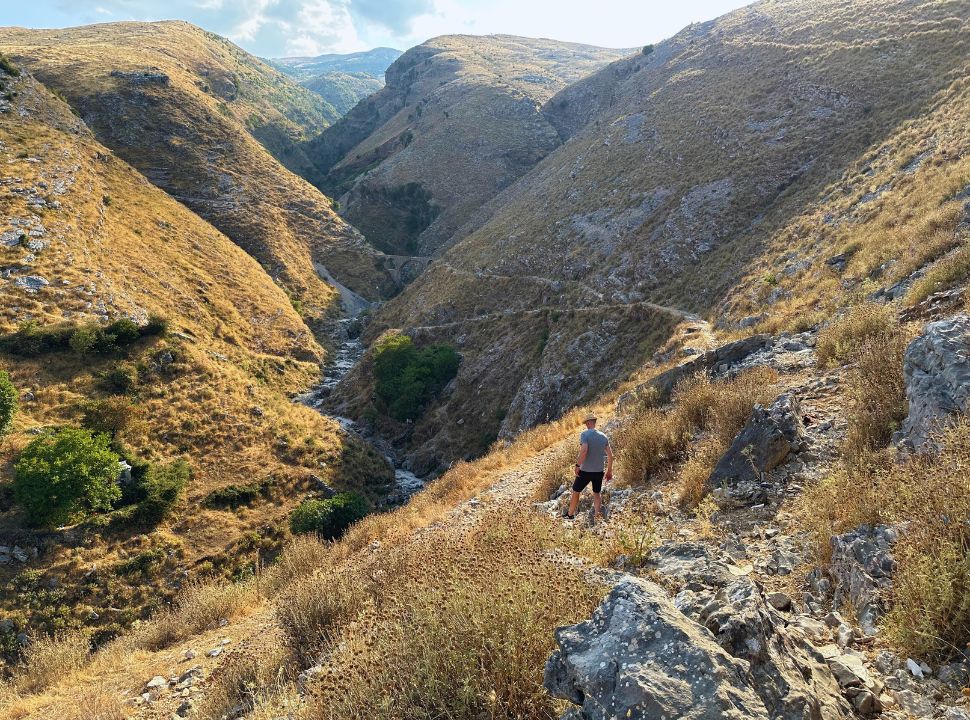
From the Albanian Alps to the Ionian Sea, Albania is packed with natural landscapes that will blow you away. The country offers a diverse holiday experience, from exploring natural sites and hiking in stunning valleys to crystal-clear beaches.
Here are just a few great ideas to make your visit to Albania unforgettable:
Blue Eye
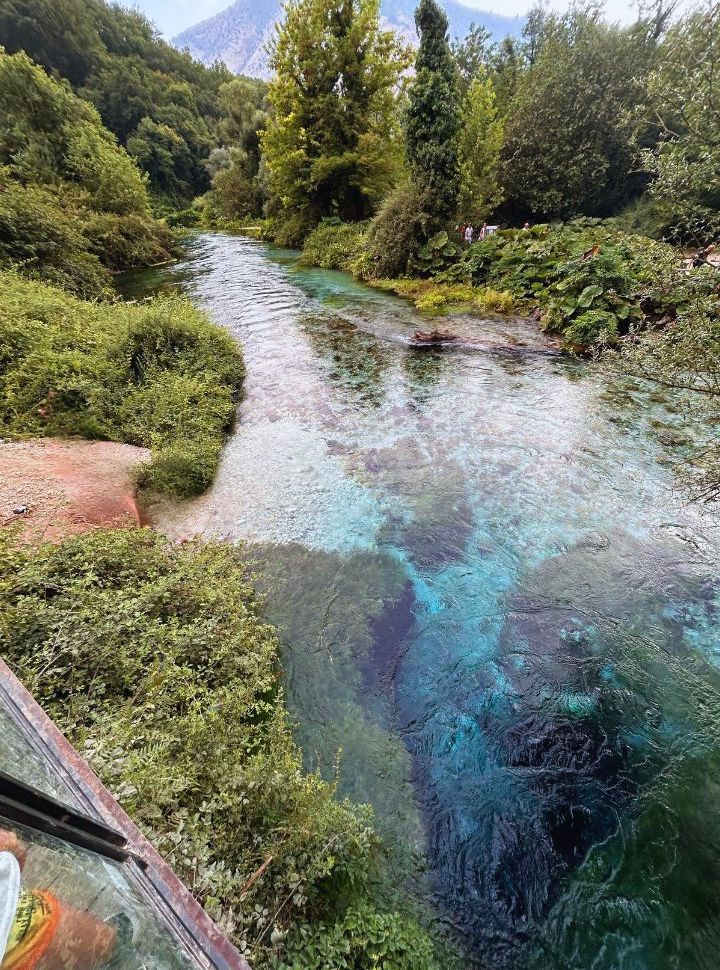
One of the most mesmerizing sights is The Blue Eye (there are two of them: one in Teth National Park, the other not far from Sarandë), both are a natural spring with turquoise waters so deep that divers have yet to reach the bottom.
We visited the natural phenomenon near Sarandë called Syri i Kaltër. Not only were we amazed by the amazing color of the water but the lush green surroundings made it picture perfect.
Do you want to add the Blue Eye in your Albania Itinerary? Check out the post we wrote about all you need to know when visiting this beautiful natural spring.
Llogara pass
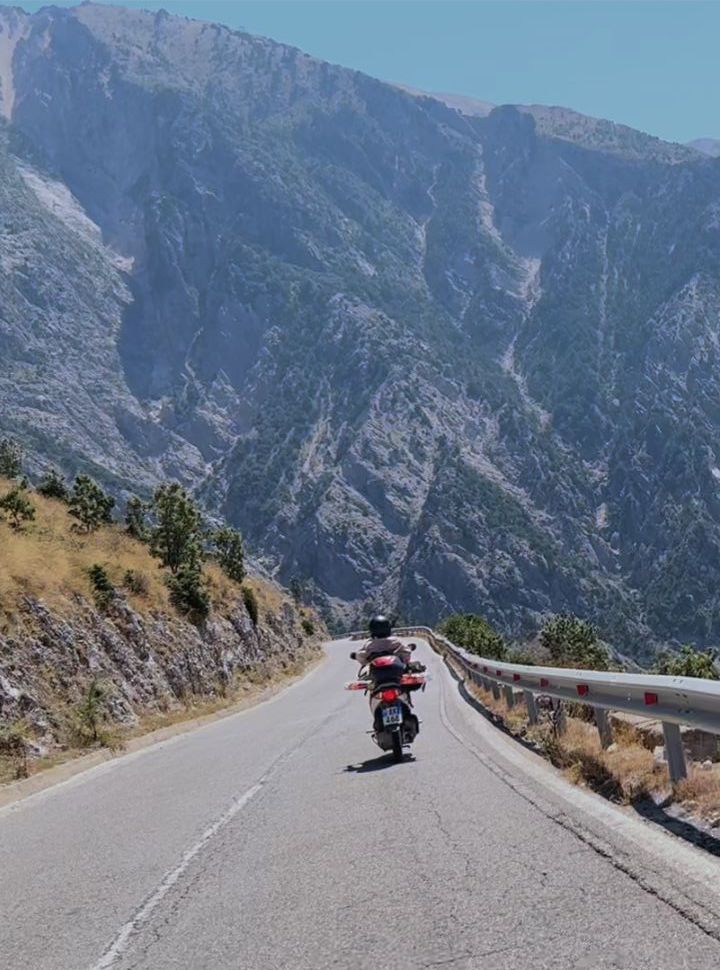
Another surprise was the mountain scenery of the Llogara Pass. It was an amazing experience to drive with our motor scooters along the mountain range.
The road took us up the mountains, where we had the best panoramic coastal views.
Shala River
Also known as Lumi i Shales, this is another natural wonder you don’t want to miss. It is a river but the blue-green water with its white pebbled shore reminds you of a tropical beach.
That is why it is often called the ‘the Thailand of Albania’. Boats only leave in the summer months from Fiërze.
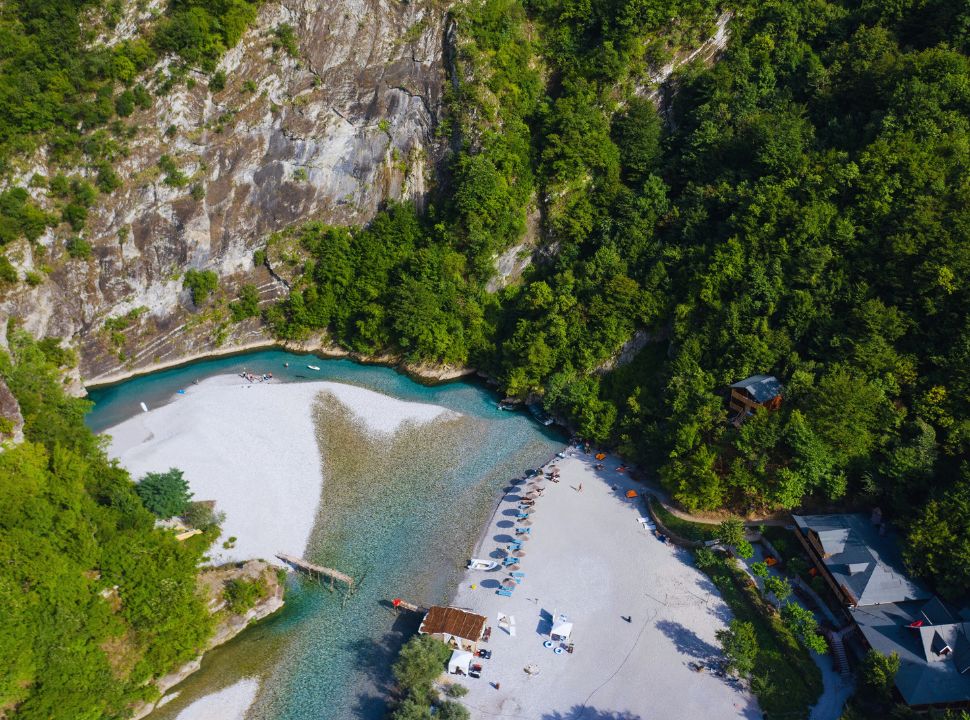
Teth Valbona Path
For those who love hiking the Teth to Valbona trail in the Accursed Mountains is a must. This challenging yet rewarding trek offers breathtaking views, picturesque valleys, and encounters with traditional Albanian villages.
Lake Koman
A trip to Lake Koman offers an incredible boat ride through fjord-like landscapes. You can combine your visit to Lake Koman with the Teth Valbona hike, making it one of the best hikes in the Balkans.
Waterfalls
If waterfalls intrigue you, Grunas Waterfall in Theth National Park is an impressive sight, cascading down 30 meters into a serene pool. Or if you are in Berat, check out Bogove Waterfall.
Beaches
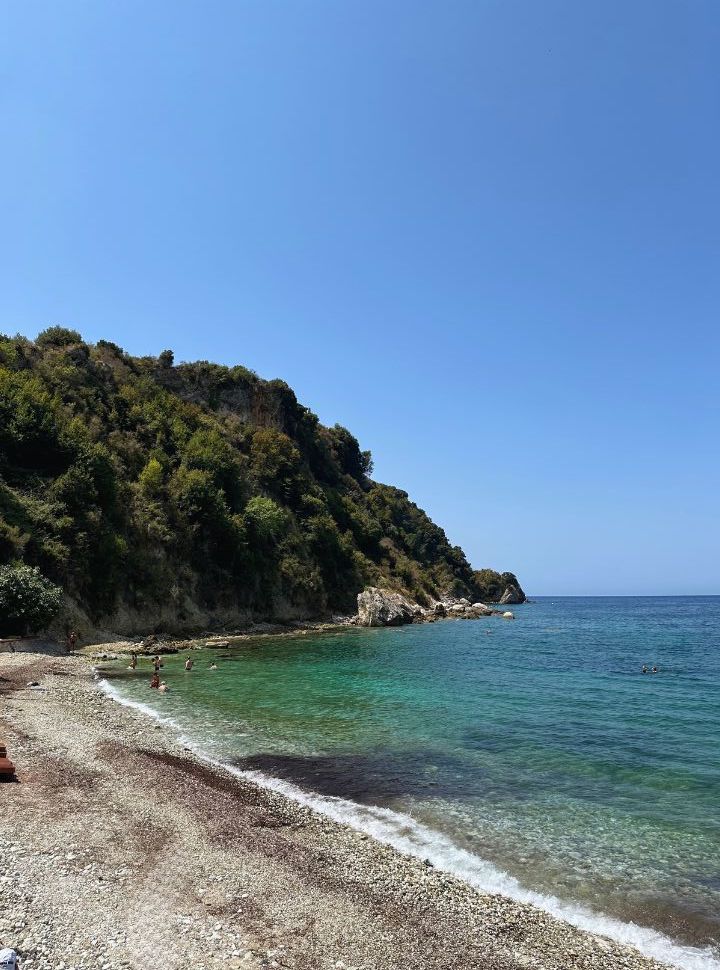
For beach lovers, along the Albanian Riviera, you can find the most stunning beaches. Some call them hidden gems. We prefer to call them amazing but absolutely not hidden anymore.
More on that later when we dive into why Albanian might not be worth visiting…
We visited many beaches along the Albanian Riviera and particularly loved:
- Borsh Beach
- Buneci Beach
- Porto Palermo Beach (don’t confuse it with Palermo Beach near the fort)
- Potami Beach at Himara.
If you heard of Dhermi Beach and want to know about this popular beach, check out all you need to know about this beach before you go.
2. Affordable Compared to Other European Countries
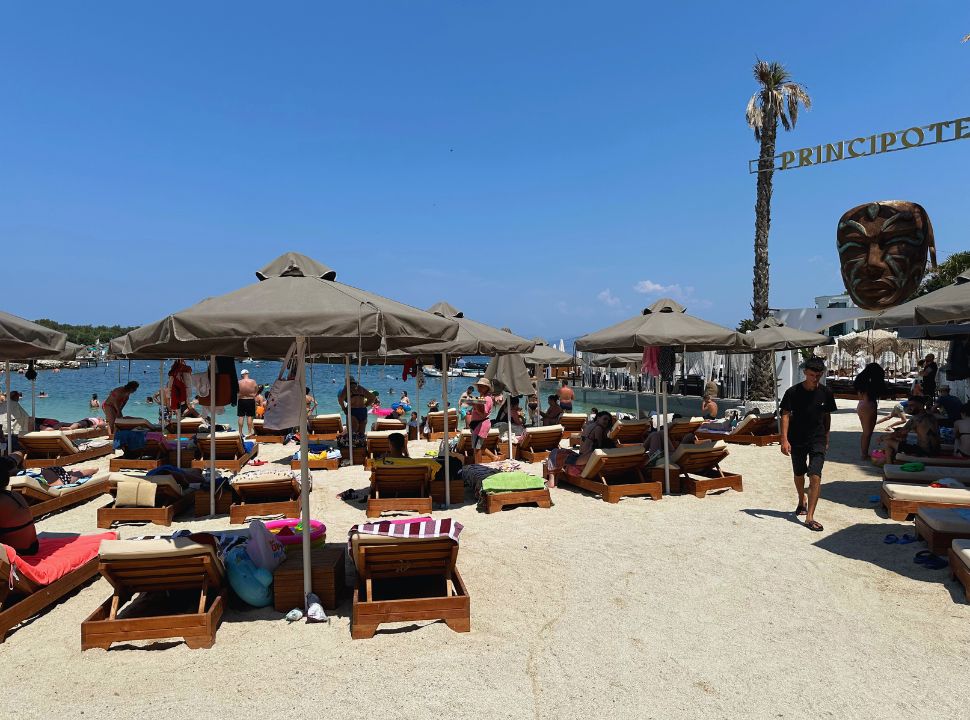
Albania isn’t dirt cheap, but it can offer great value for accommodations, food, and experiences. Only if you avoid tourist traps along the Riviera, where beaches have been overtaken by expensive beach bars charging high prices for sun loungers and drinks. Here, prices are not much cheaper than in Greece or Italy.
If you’re looking for more budget-friendly options, head inland to the villages, where prices are often half of what they are on the coast.
This is perfect for travelers seeking an authentic and affordable experience, with small family-run guesthouses offering warm hospitality.
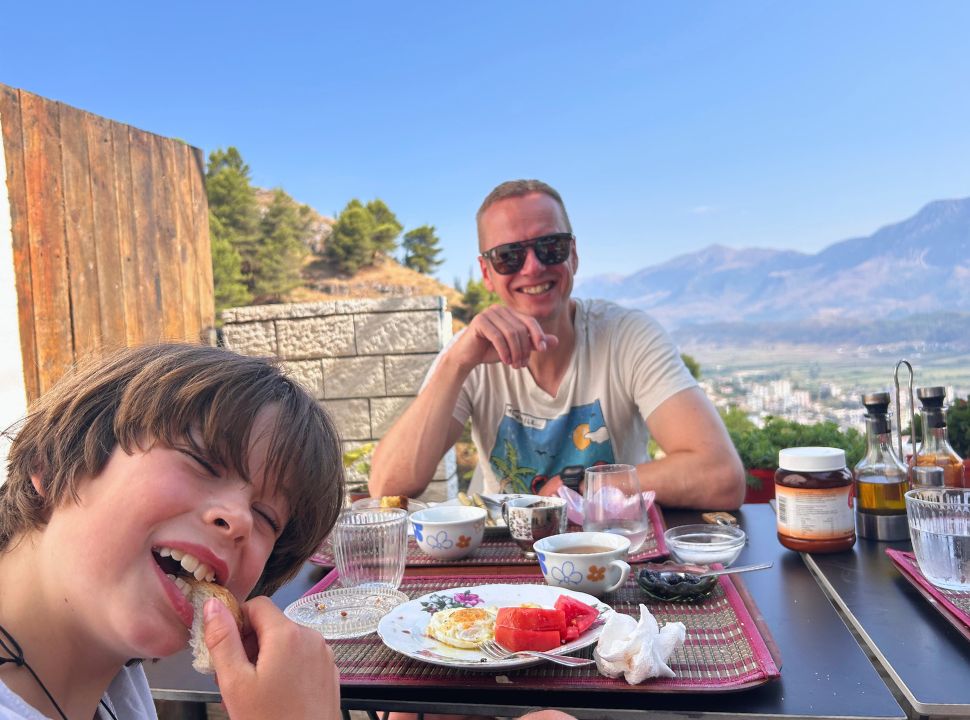
Not only does heading inland save money, but this is where you will still experience more of the true Albanian culture. In places like Gjirokastër and Berat, you can explore historical sites and visit charming local markets.
The Accursed Mountains provide budget-friendly hiking opportunities, with affordable guesthouses in Theth and Valbona offering cozy accommodations in breathtaking landscapes.
Albania is still a great value, but knowing where to go makes all the difference.
PIN IT TO SAVE IT
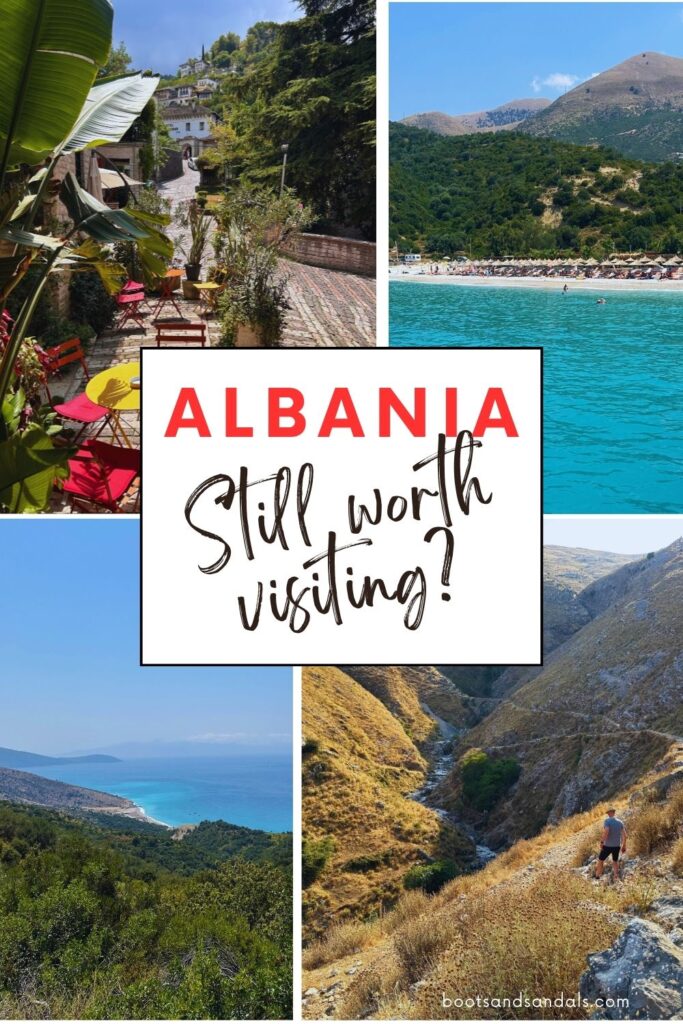
3. Rich History & Culture
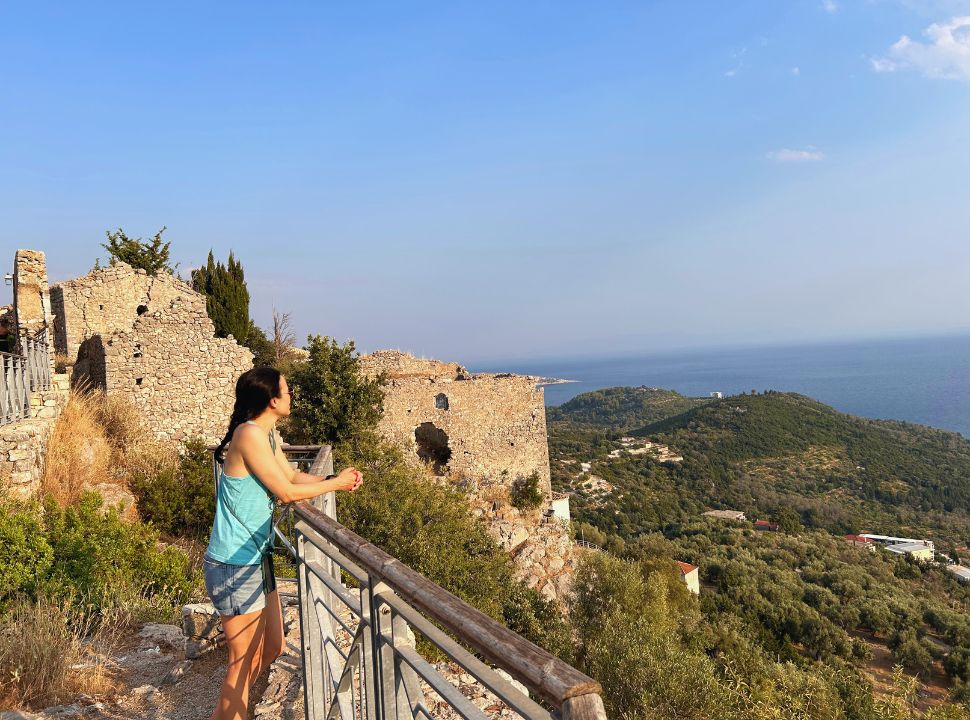
You can pretty much describe Albania’s history as tense, with many empires battling to rule over this strategically positioned land. The Romans, Greeks, and the powerful Ottoman Empire left their mark. And in the communist era, the country was closed off from the rest of the world.
Albania became part of the Ottoman Empire in the late 15th century and remained under Ottoman rule until 1912 when it declared independence.
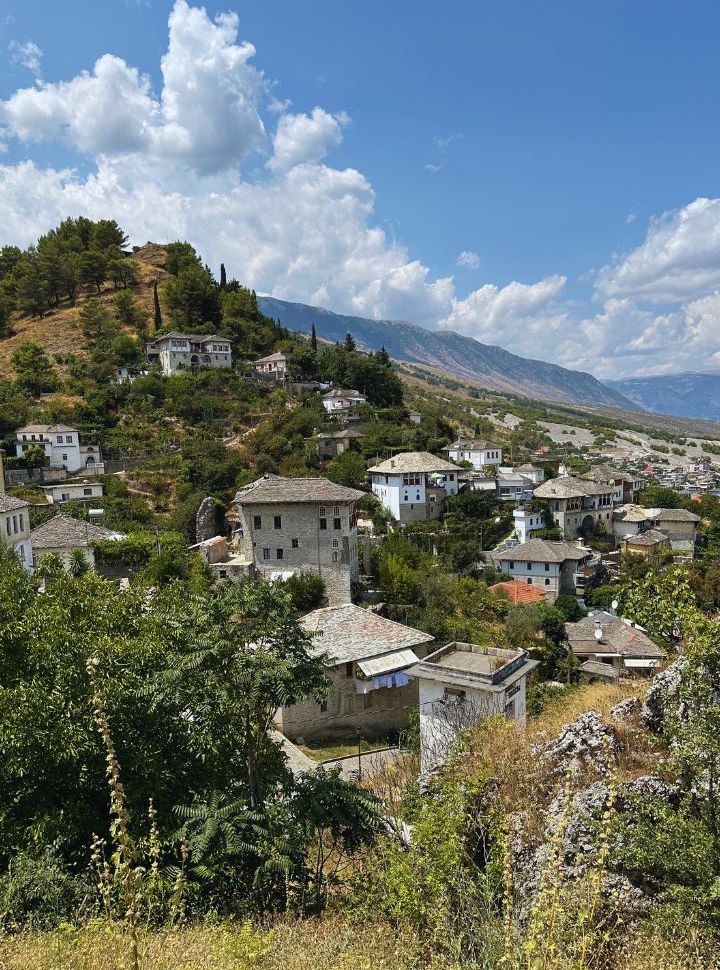
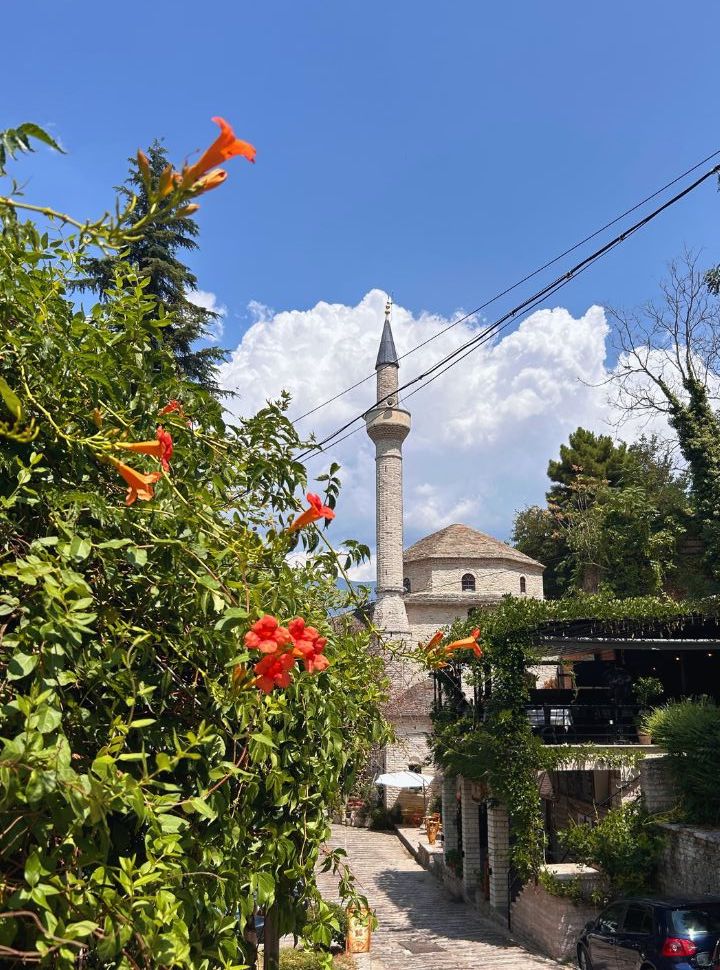
In 1939, the then Kingdom of Albania was invaded by Italy and later Nazi Germany. Following World War II, Albania was proclaimed the People’s Socialist Republic of Albania, under a strict communist regime that lasted until 1991, when the country transitioned into the Republic of Albania (source: Eurydice) .
Evidence of this turbulent past remains scattered across the landscape, most notably in the thousands of bunkers built under Enver Hoxha’s rule.

Historic sights
In the villages, you can still experience the rich culture of the Albanians, where traditions have been preserved for generations.
Towns like Gjirokastër and Berat, both UNESCO World Heritage Sites still have incredible Ottoman-era architecture, with stone houses, fortress ruins, and winding cobblestone streets.
Museums in these cities offer insights into Albania’s past, showcasing artifacts from different ruling eras and the resistance against occupation.
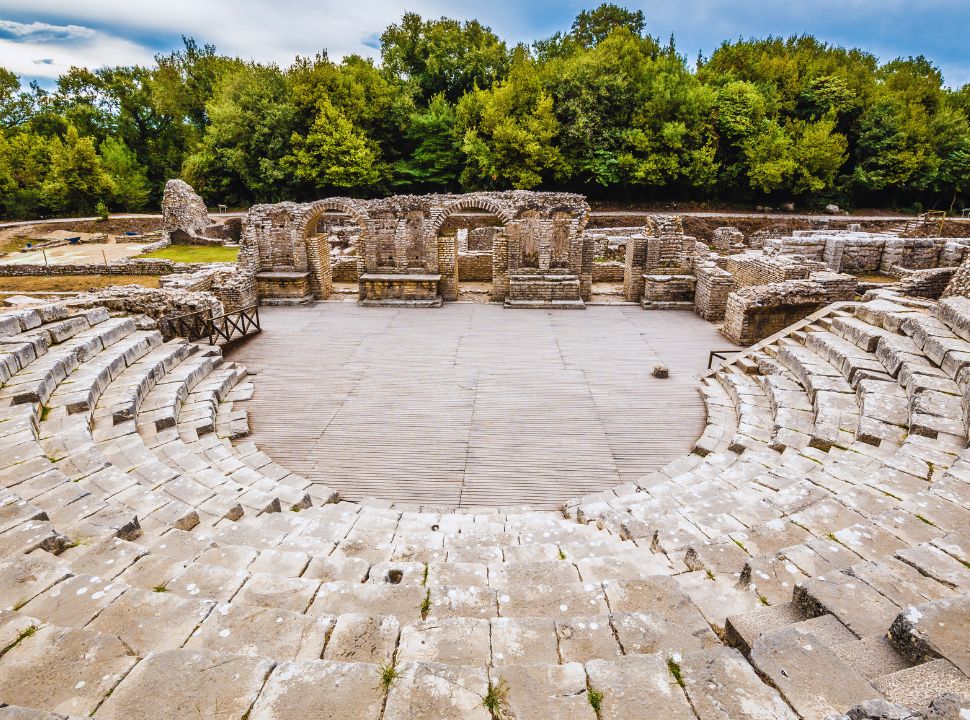
A must-visit for history lovers is Butrint National Park near Ksamil, where you can explore Roman ruins, including an ancient theater, basilica, and city walls that are evidence of Albania’s past as a crossroads of civilizations.
Apollonia located north of Vlorë is another incredible archaeological site, featuring ancient Greek and Roman influences.
Albania’s historical richness and its stunning landscapes, make it a wonderful destination for those who want to explore more of this beautiful country.
4. Friendly Locals
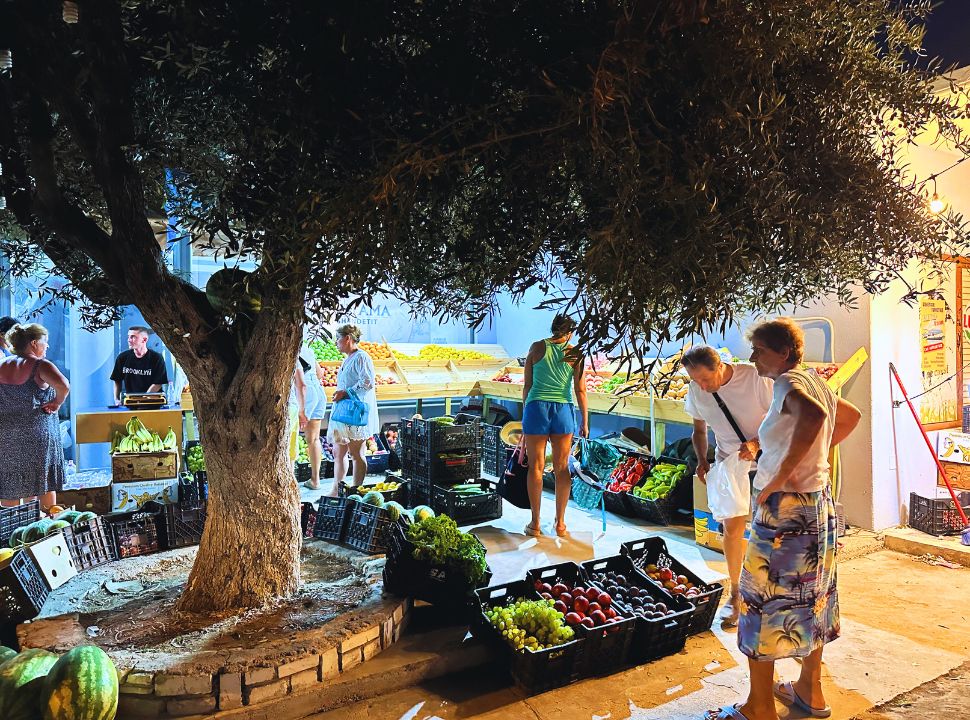
Albania is home to a diverse mix of minorities, some of whom trace their lineage back to Egyptian slaves. Over the centuries, Albania has been influenced by various civilizations, and during the Ottoman rule, a significant portion of the population converted from Christianity to Islam.
However, under Enver Hoxha’s strict communist rule, religion was entirely banned, and places of worship were shut down. After the fall of communism, most Albanians resumed practicing Islam, though religious tolerance remains strong in the country (source: unhcr.org)
Among the minority groups in Albania, you’ll find Roma, Kosovars, Greeks, and Macedonians.
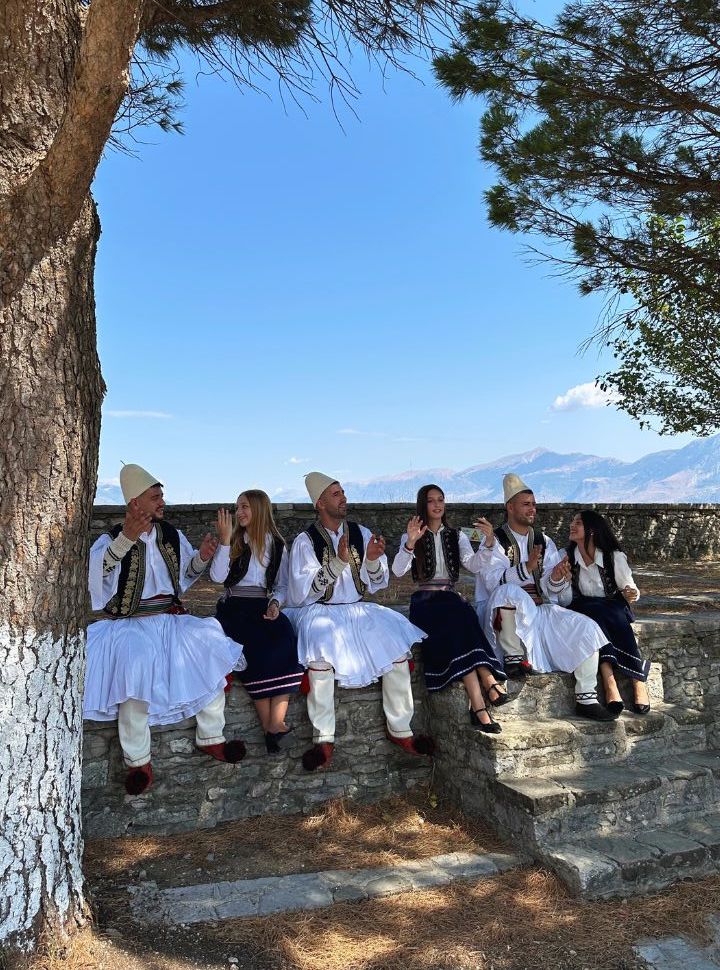
While traveling along the Riviera, we spoke a lot with our accommodation owners, who were often Albanian Greeks. They told us they had been there for generations and all spoke excellent English. We recognized the openness and friendliness we always experienced when traveling in Greece.
In contrast, while Albanians are not unfriendly, they tend to be more reserved. We would often greet them when passing on the street but never did one greet us back. This could be due to the language barrier or simply because they prefer to keep tourists at bay.

Of course, this isn’t always the case. Every time we drove past a petrol station where we’d previously filled up, the attendants would wave at us with a huge smile. So, it’s clear that not all Albanians are the same.
Locals were extremely friendly in places where tourism is more common, such as Gjirokastër. Even when language was a challenge, the owner of our guesthouse made us feel incredibly welcome.
5. Amazing Mediterranean Food (if lucky!)
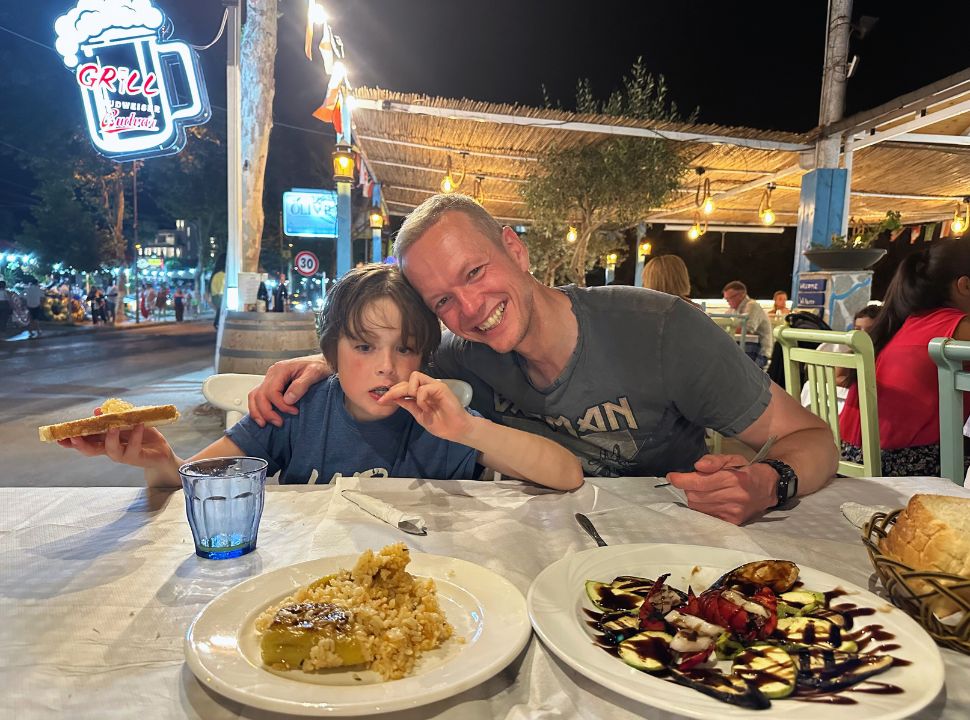
Albania is known for its delicious food, especially for those who enjoy meat and seafood.
Traditional dishes include Tave Kosi, a baked lamb and yogurt dish, Byrek, a flaky pastry filled with cheese or meat, and Fërgesë, a rich stew made with peppers, tomatoes, and cottage cheese.
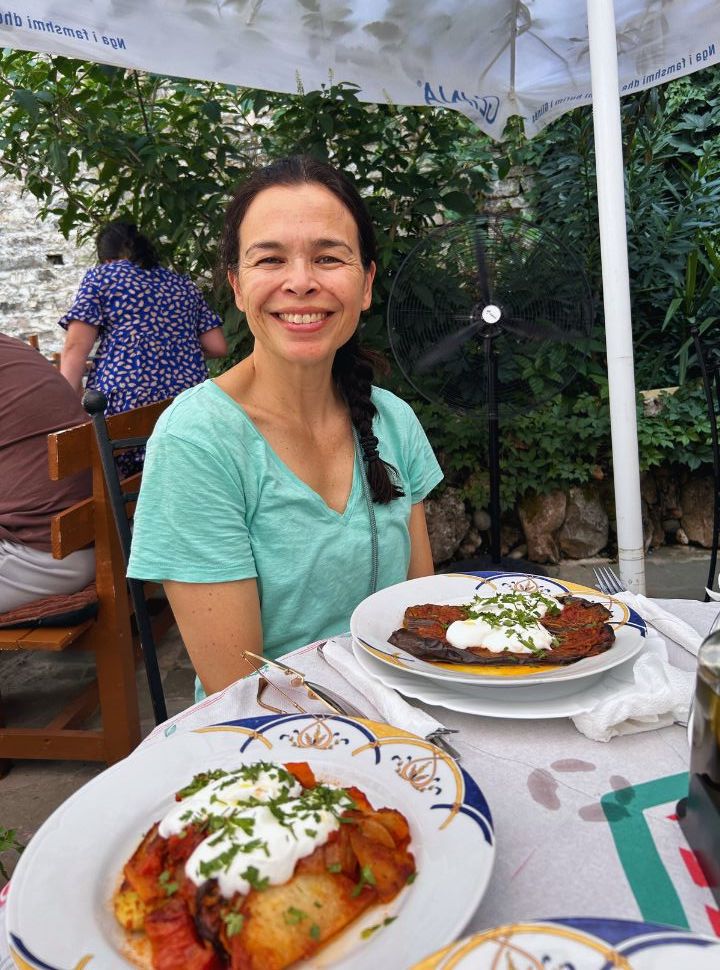
As vegetarians, we could choose from various dishes, especially in small towns.
Along the Albanian Riviera, however, our options were often limited to pasta, pizza, grilled vegetables, stuffed pepper, and Greek salad. Delicious at first, but after having it nearly every day, we took a break from feta cheese by the end of our trip.
Overall, the food along the Albanian Riviera was the same everywhere. It was obvious they catered only to tourists.
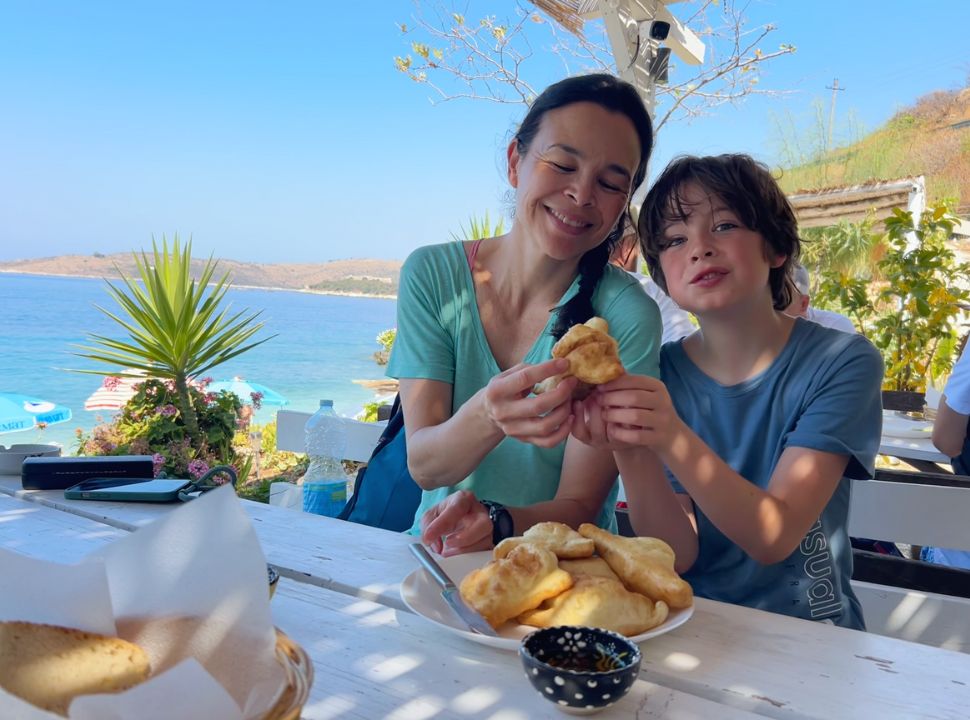
Luckily we discovered that Albanians have a serious sweet tooth. In Gjirokastër, we indulged in delicious cakes, while in the mornings, we treated ourselves to Albanian donuts drizzled with chocolate and honey.
We also discovered a bakery in Dhermi that had croissants and pistachio filling. It was our favourite breakfast stop.
The Bad: Why Albania may not be worth visiting
While Albania has a lot of amazing things to offer, it’s not for everyone. If you expect a budget destination, easy public transportation, and untouched beaches. In that case, you should rethink your travel plans to Albania.
1. Overdevelopment Along the Albanian Riviera
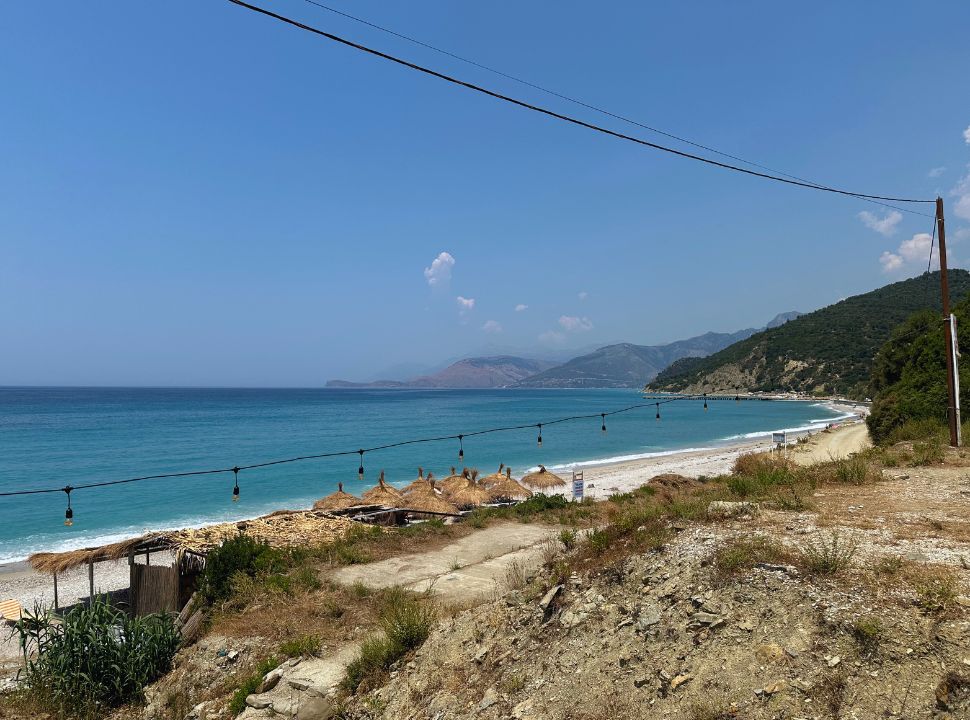
The Albanian Riviera is incredibly beautiful. Popular beaches are Ksamil Beach, Gjipe Beach, Himara Beach, and Dhermi Beach. But are they worth visiting?
We were in Albania in the summer months. This is the high season and the number of visitors is huge. We didn’t expect anything less since we were on a school holiday.
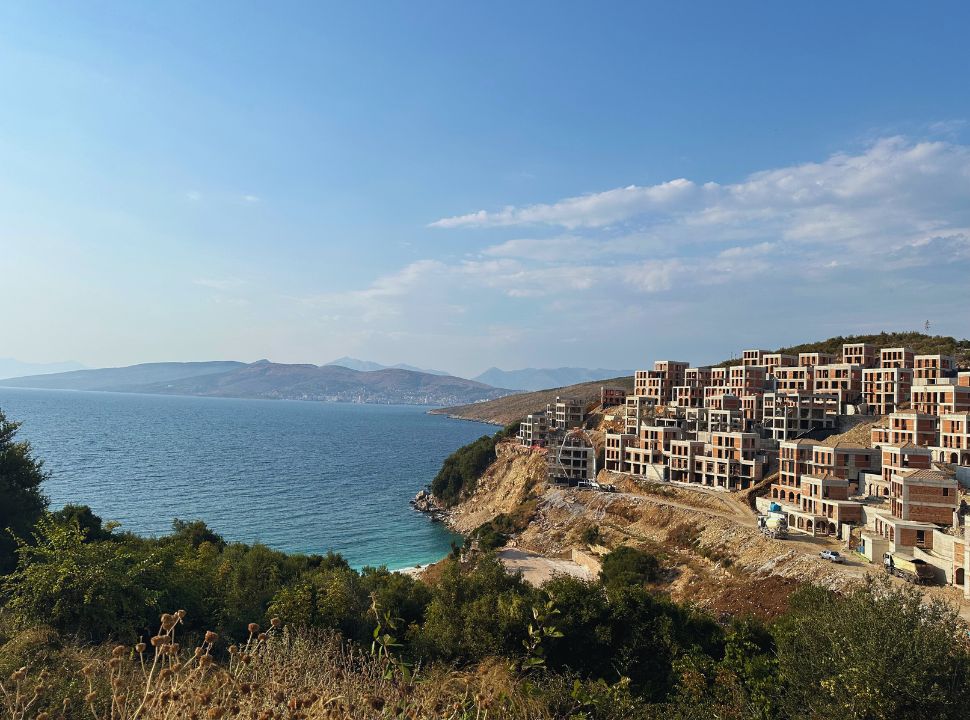
But the thing we were most shocked about was the unchecked tourism development. What was once pristine beaches are now turned into concrete jungles lined with luxury resorts and beach clubs.
Instead of thoughtful planning, new developments seem focused on maximizing profit, leading to overcrowding, limited public beach access, and soaring prices for sunbeds and drinks.
We were particularly shocked about Ksamil Beach and nearby beaches, known as the ‘Maldives of Albania’.
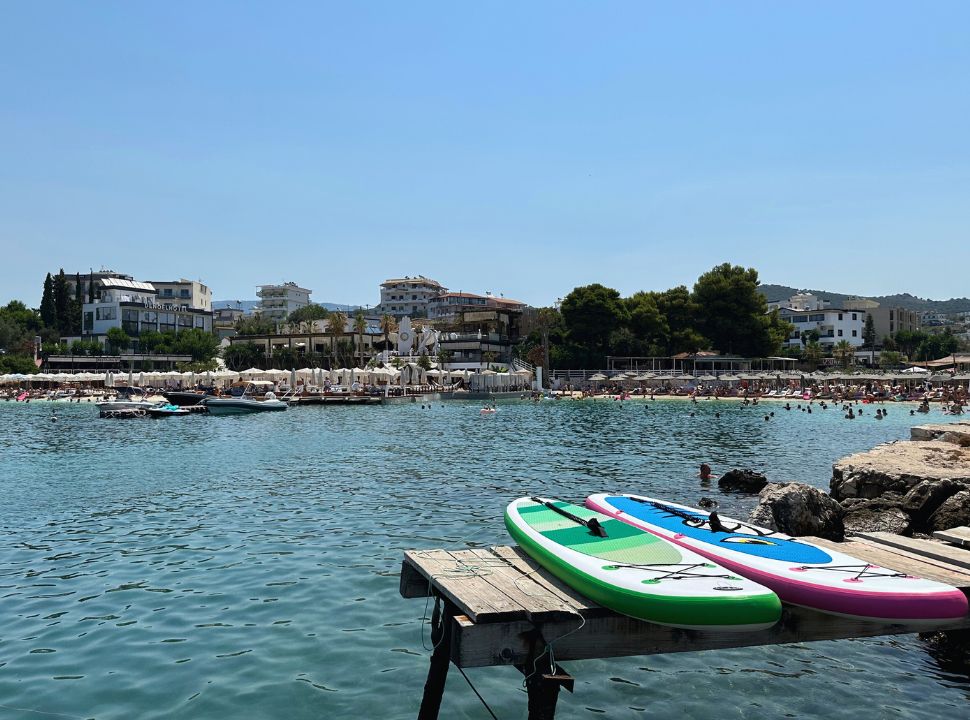
Everywhere there was construction going on and the beaches were packed with sunbeds. We also soon discovered that the white sand in Ksamil is not its original sand. Instead, it is river sentiment that is harmful to the water quality.
So what happened?
Previously, much of the Albanian coastline remained untouched due to military restrictions. Still, developers have had free rein with those lifted. Areas like Nazar Beach are now filled with high-end apartments, marketed as the “Green Coast”.
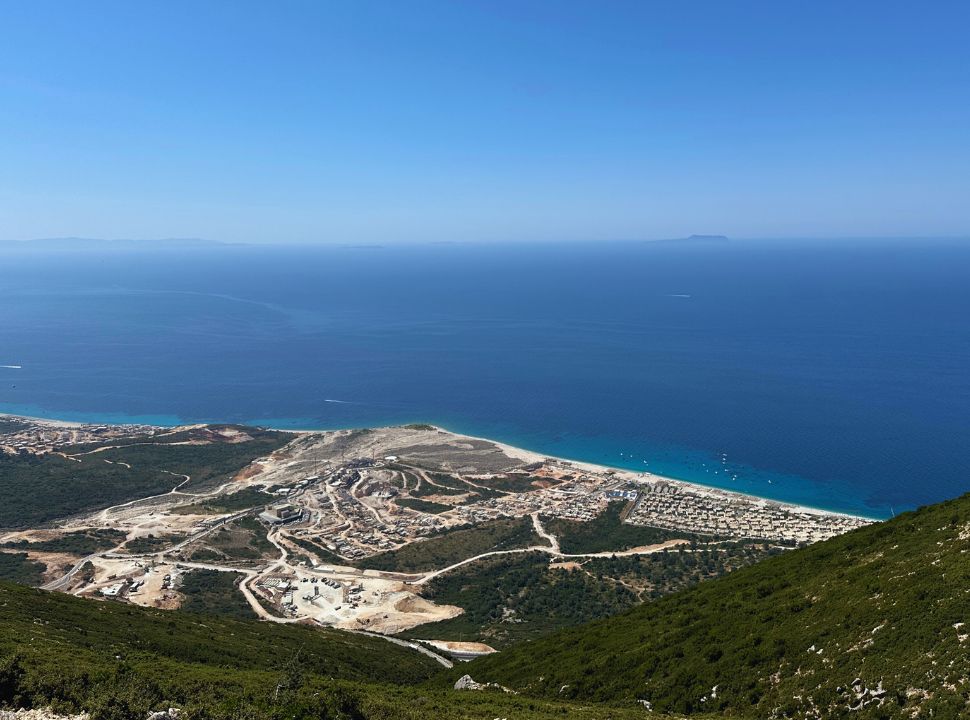
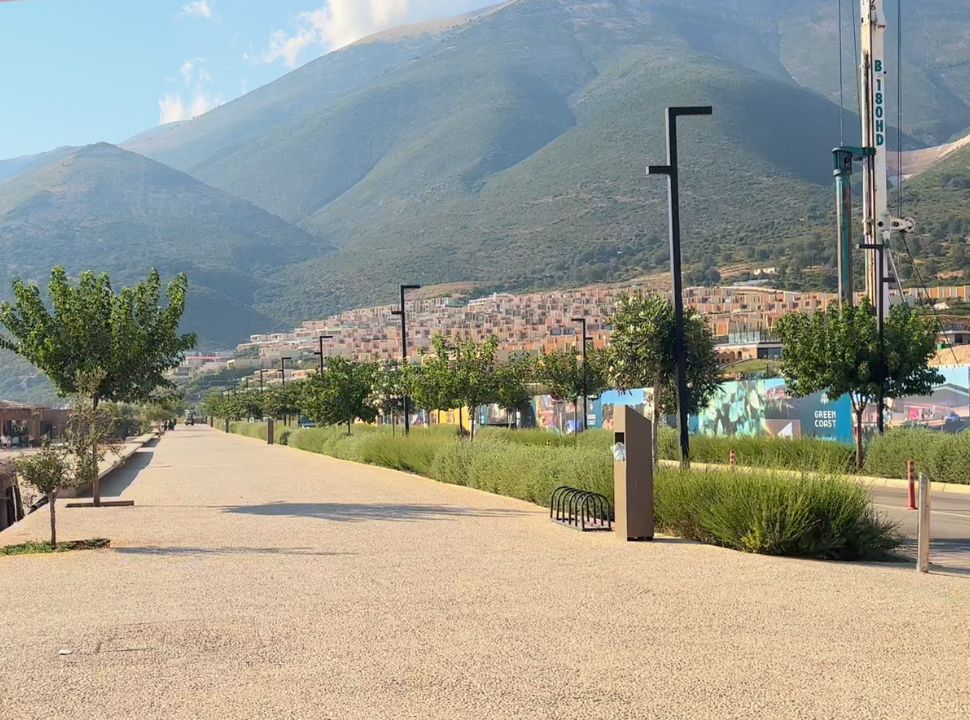
We can only wonder about the sustainability and whether local Albanians truly benefit from the tourism boom, or if it mainly serves wealthy investors.
Unlike Greece, where public beaches are preserved, in Albania, the vast majority of beaches are controlled by beach clubs, with only a handful of public access points remaining.
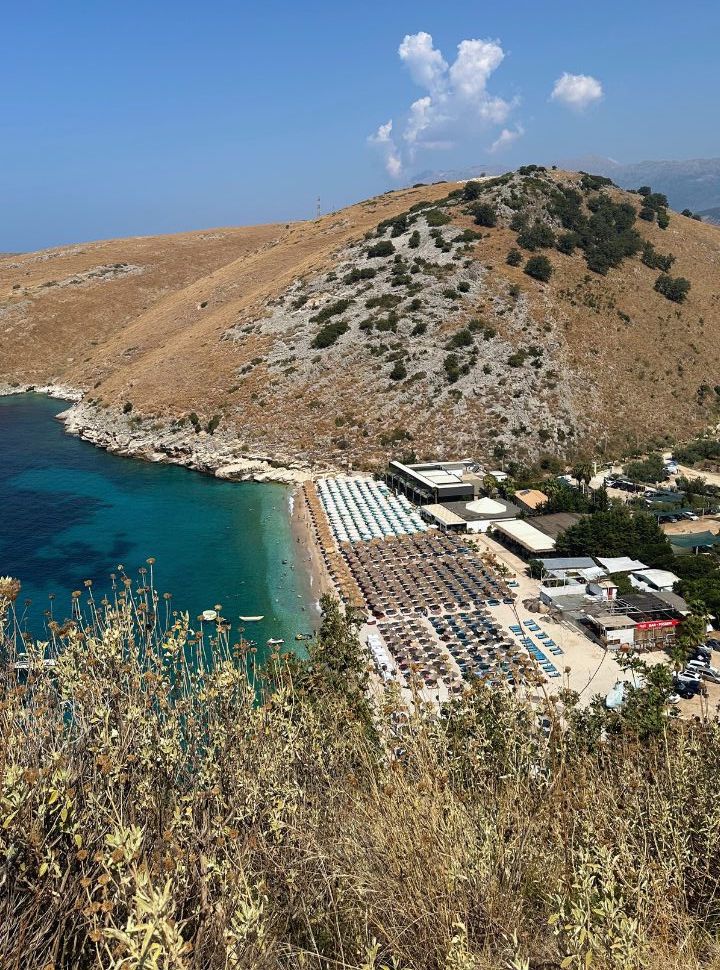
Visitors must pay up to 500 Lek (50 euros) for a sunbed in some locations. At the same time, smaller coves require mandatory rentals before entering.
The good news is that larger beaches still have some free spaces for public beaches if you know where to look.
Usually, you can find a nice quiet spot on the far edges, making it possible to relax without paying extra. We will go into that a bit later…so continue reading.
2. Limited Infrastructure
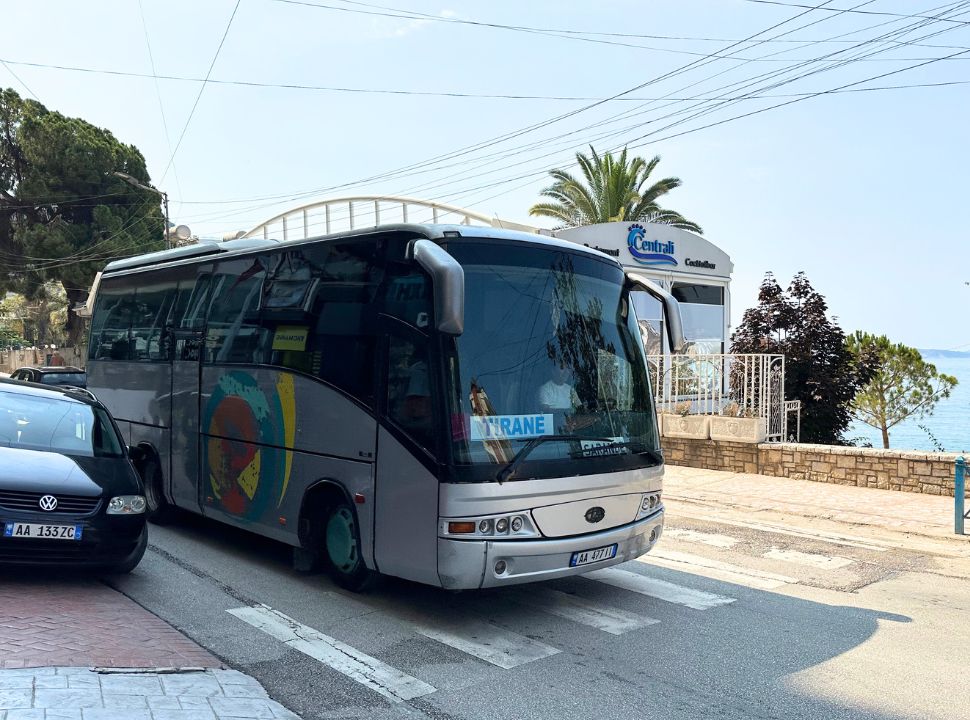
Trains? Forget about them in Albania. The only way to get around is by bus/shuttle bus or your own set of wheels. If you plan to explore beyond the major cities, renting a car or scooter is the way to go.
Buses and minibusses connect Tirana to places like Vlore, Gjirokastër, and Sarandë, so getting between major destinations isn’t too difficult. But once you step off the beaten path, public transport becomes scarce, especially in the mountains.
If you want total freedom to explore, a rental is a must.
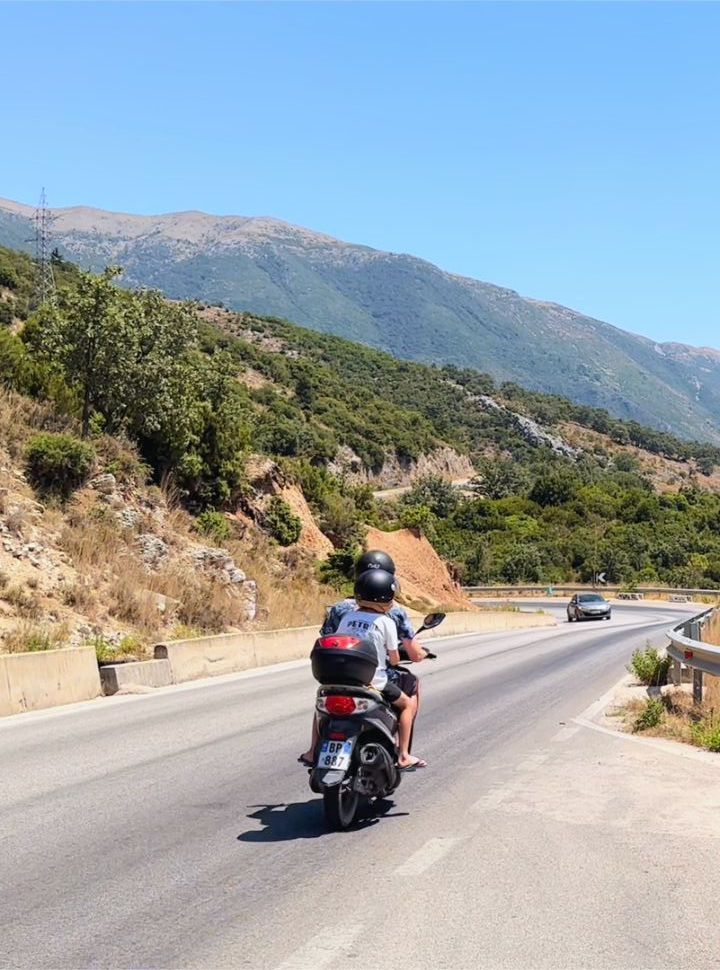
We rented a motor scooter and rode from Ksamil to Llogara Pass, returning to Gjirokastër. It was a stunning road tip!
The roads were surprisingly smooth and well-maintained, at least on our routes. There was also hardly any traffic in the mountains. We didn’t venture beyond Gjirokastër, so we can’t speak for the more remote areas.
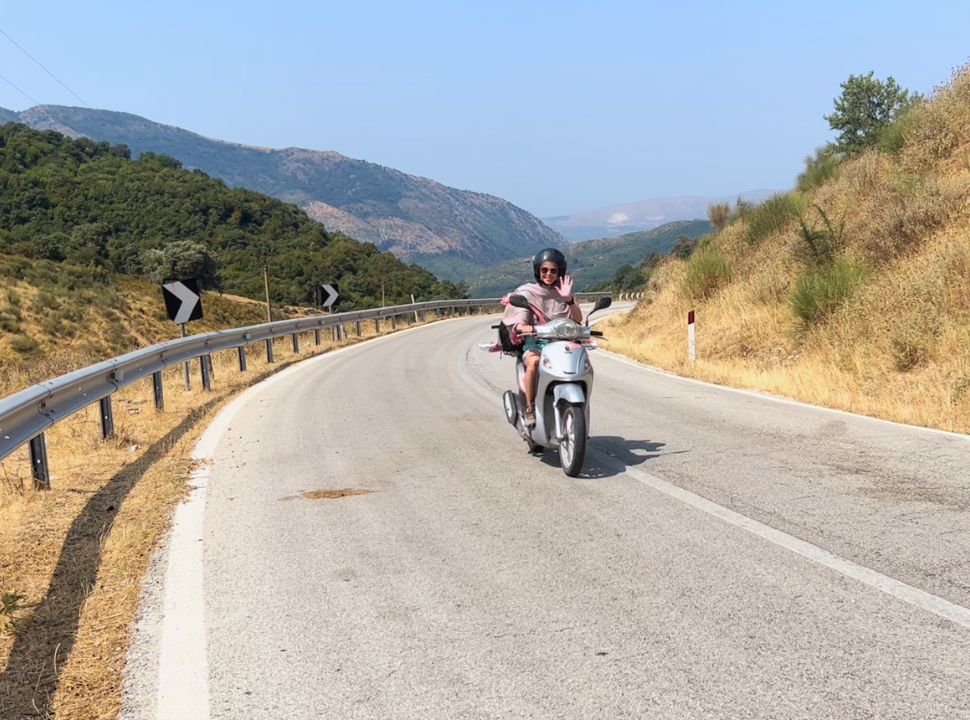
Despite warnings about crazy Albanian drivers, we had no real issues. Sure, Sarandë was chaotic, and yes, some drivers sped past us, but they always kept their distance.
Interestingly, Albania is packed with luxury cars, Mercedes, BMWs, and even Porsches which might explain why drivers seemed extra careful on the roads. If you’re worried about driving here, don’t be. It’s all part of the experience!
3. It’s Not as Cheap as You Think
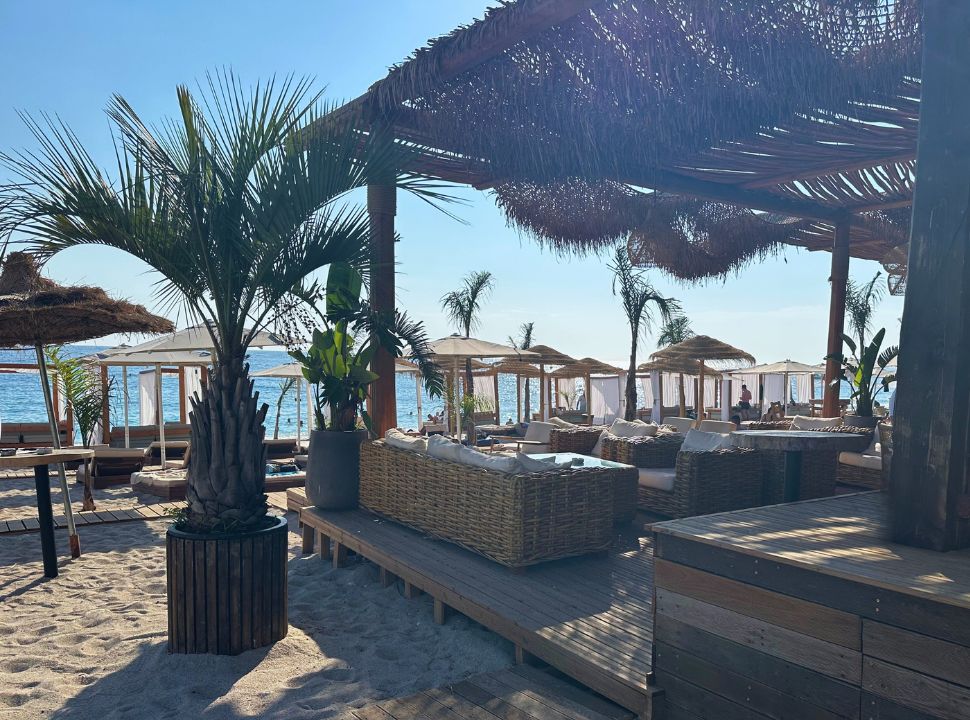
Before visiting Albania, we expected it to be extremely cheap. The highest salary per month in Ablania in 2024 was 77.669LEK which is 700 Euro or 808 USD (source: tradingeconomics) which is pretty low compared to European countries. Many online sources claim it was a real budget holiday destination.
While Albania is certainly more affordable than many European destinations, our experience, especially during peak season, didn’t meet our expectations.
What caught us off guard was the number of high-end luxury cars. The coastal towns were packed with the most expensive Mercedes and Audi models you could imagine.
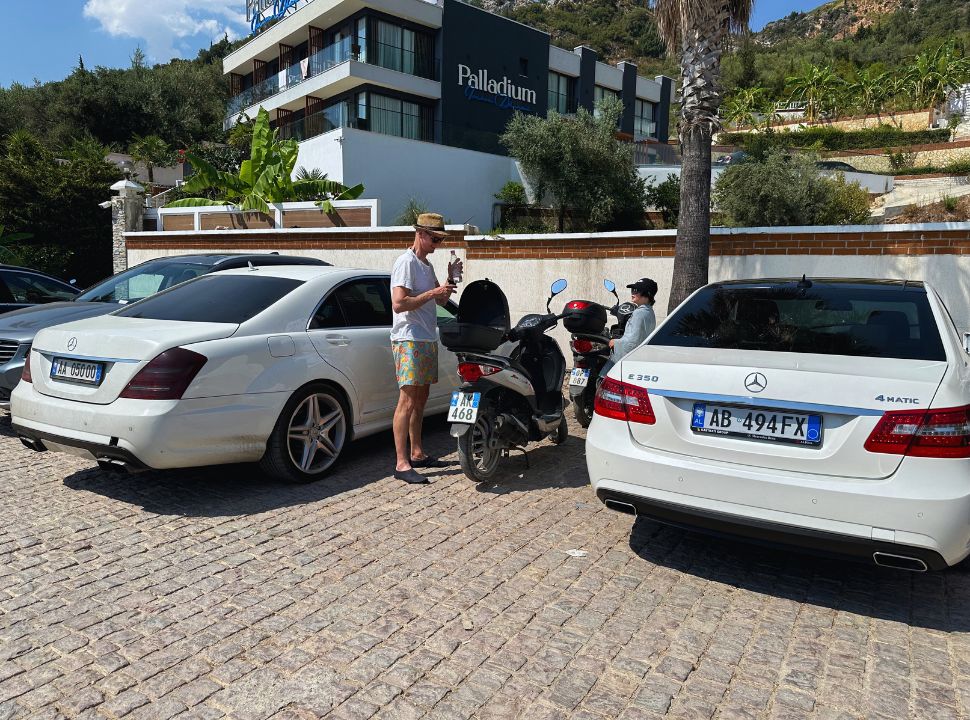
Of course, this represents only a small fraction of Albanians, whose success doesn’t come from a typical 9-to-5 if you know what I mean. And where do they gather? Along the Albanian Riviera.
What to expect
We steered clear of flashy restaurants and overpriced beach clubs to keep things budget-friendly, opting instead for low-key spots. Only then were the prices somewhat similar to what we experienced in Greece.
For example, renting a scooter costs us €25 per day, similar to what you’d pay in Greece. Accommodation was a mixed bag with our cheapest stay being €40 per night (an absolute bargain) to €100.
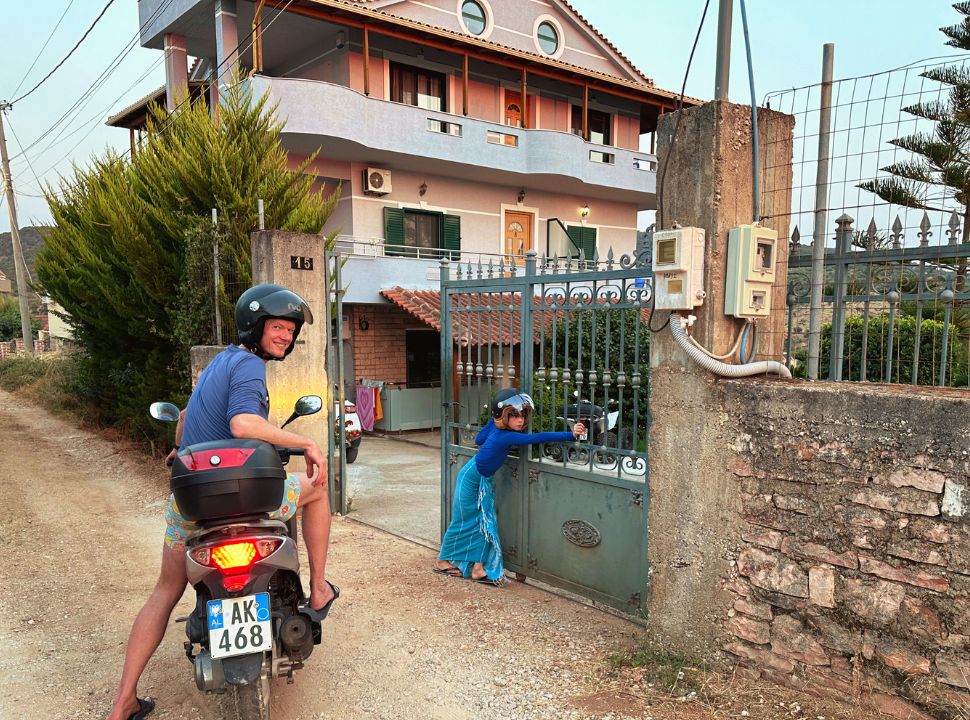
As for food, we typically spent around €10 per person per meal without ordering meat. Still affordable, but don’t expect Southeast Asia-level prices.
However, food was cheaper in Gjirokastër and near the Blue Eye, reinforcing the idea that coastal regions charge a premium.
If you’re traveling on a budget, venturing inland can save you a lot of money while offering a more authentic experience.
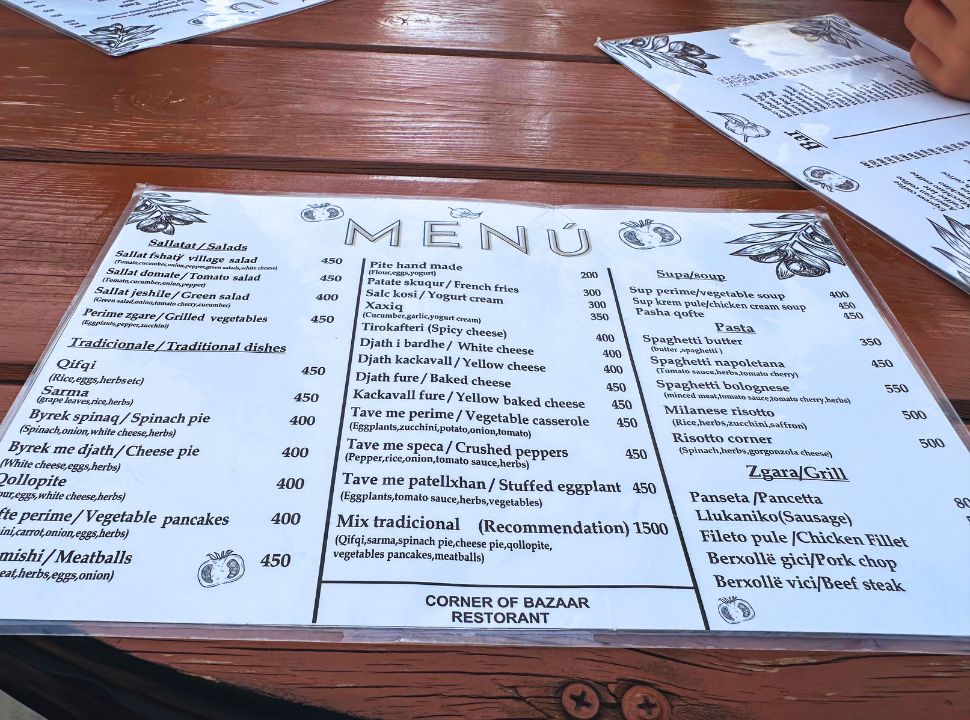
To be clear, we are not saying Albania is not worth visiting because it isn’t extremely cheap. Ultimately, we choose a country because we want to explore its beauty.
This point is to let you know that it isn’t as cheap as it seems when researching online.
4. A Lot of Trash (Construction Trash)
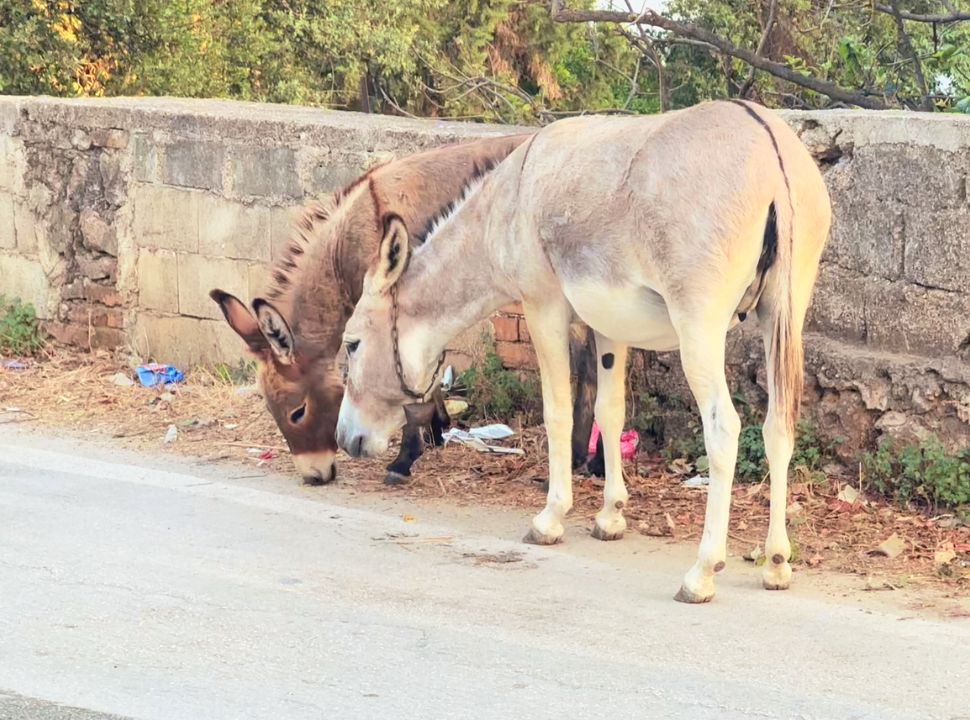
With all the ongoing construction, we couldn’t help but notice the amount of debris scattered around, sometimes even making its way to the beaches. It wasn’t uncommon to find chunks of cement, scattered nails, and other construction waste on public beaches.
It’s something to remember if you’re heading to public beaches. The water was, however, always free of plastic, except for Ksamil, where we saw a lot of trash on the bottom of the ocean water when snorkeling.
Additionally, waste management is becoming a noticeable issue in Albania. Many tourist hotspots struggle to keep up with proper trash disposal, and unfortunately, this is evident along the little streets in the tourist towns.
Of course, this isn’t a problem unique to Albania, it’s an issue affecting many tourist destinations worldwide.
5. Bad Animal Conditions
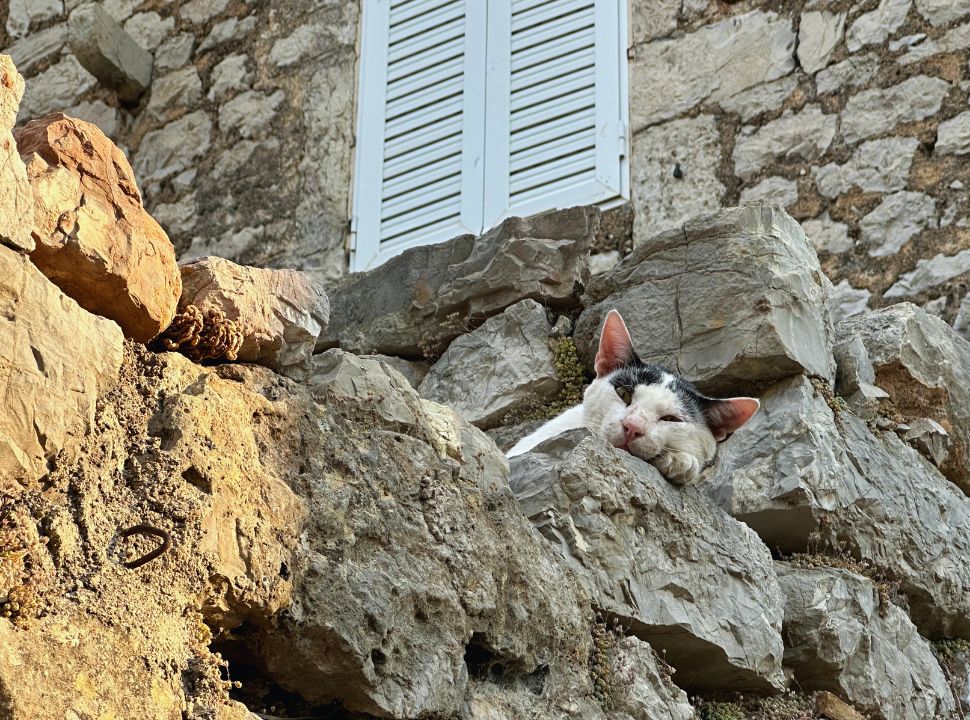
If you’re an animal lover, be prepared for some heartbreaking moments. Similar to Greece, you will see stray dogs and cats roaming the streets, and while some seem well-fed, others are visibly struggling.
It’s understandable since many locals barely get by themselves, making animal welfare a lower priority. Still, it’s difficult to ignore a skinny dog or cat searching for food as you explore.
You’ll often spot goats, cows, and donkeys wandering freely along the roads.These animals are usually well cared for, as they hold economic value to their owners. However, not all animals share the same fate.
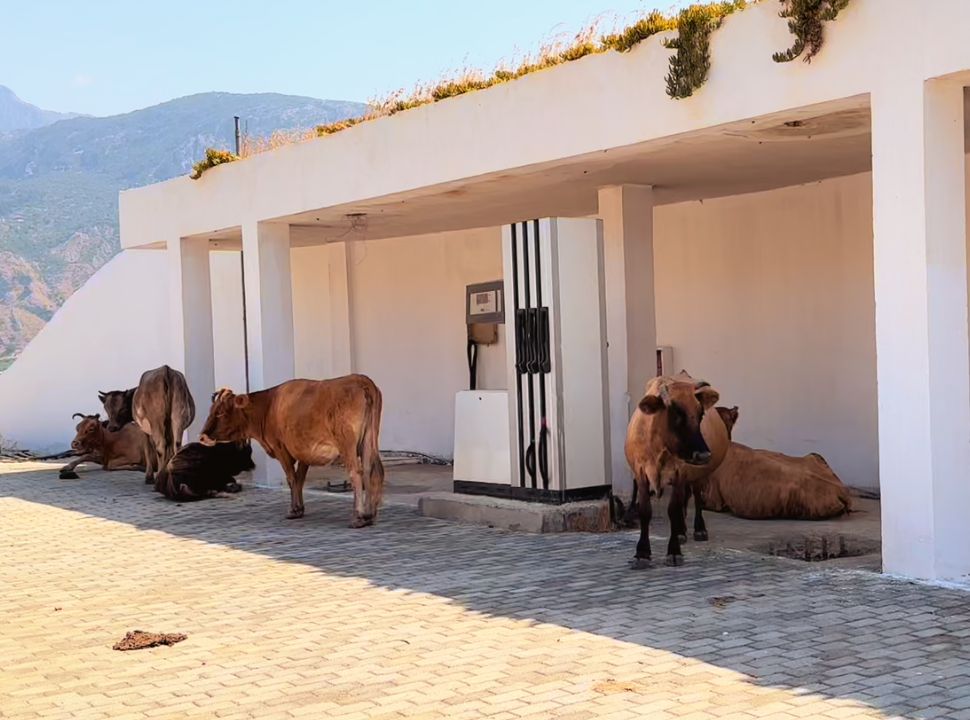
We once encountered a malnourished horse, something we had never seen before. A concerned passerby stopped, trying to offer water, but the horse was too scared to approach.
It is tough to see, but this reminds us that animals are treated differently in other countries.
6. Don’t expect Albania to be a hidden gem
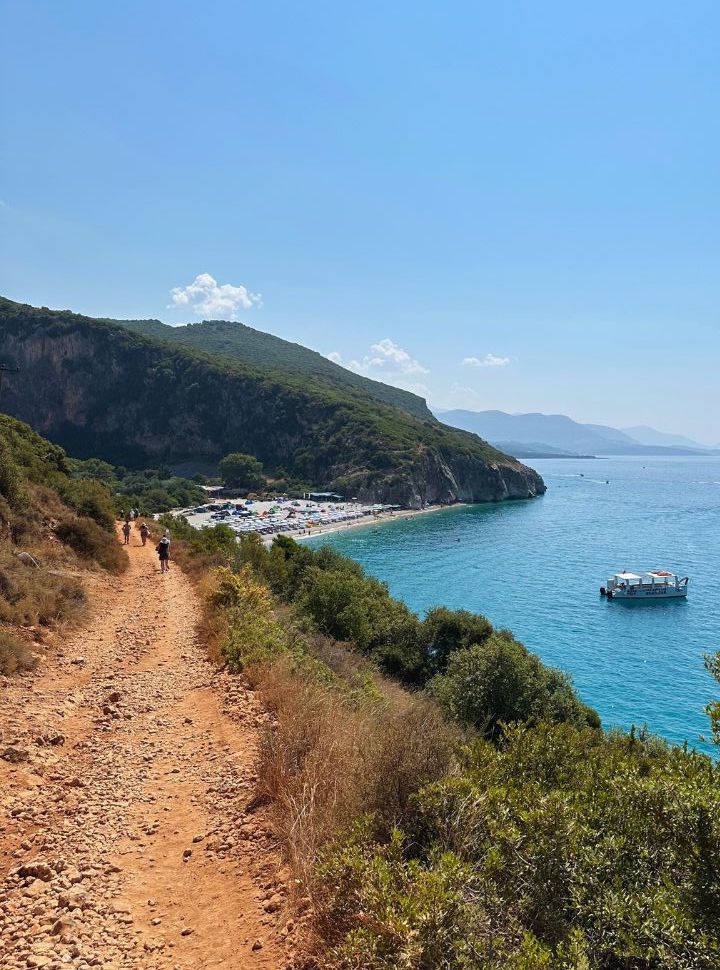
Albania is often labeled as a hidden gem or one of Europe’s last unspoiled destinations, but the truth is, it’s no longer a secret.
We didn’t expect to have places to ourselves, but we were surprised at how busy some of the country’s most popular sights have become.
Destinations like Butrint National Park, Gjirokastër, and the Blue Eye are packed with visitors, especially since many tourists take day trips from Ksamil and even Corfu. If you’re visiting during peak season, be prepared for large crowds.
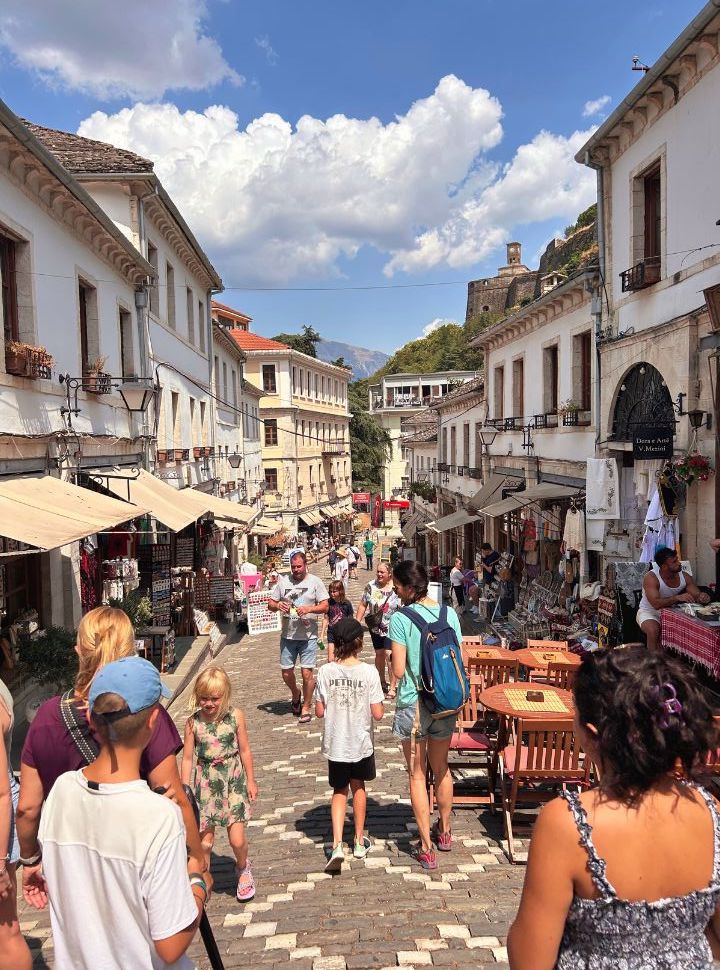
That said, if you venture off the beaten path or travel during the shoulder season, you can still find places in Albania that feels undiscovered.
But with tourism growing rapidly, even the Albanian government is considering building a new airport in Vlorë. This move could threaten unique wetlands and accelerate mass tourism in the region.
Tips that make Albania worth visiting
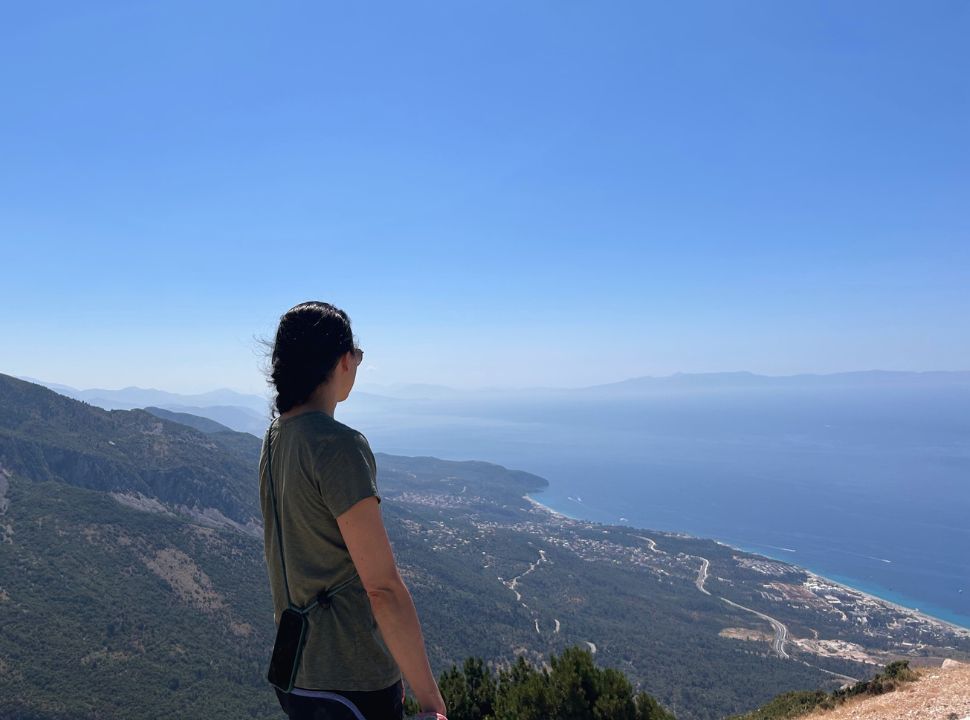
Every time we travel, we look back and think, “What would we do differently?” Albania is one of those places where we would’ve planned things completely differently.
When mapping out our road trip, we knew Albania’s real treasures weren’t just along the Riviera. The real magic is in the mountains, the hikes, and the small villages.
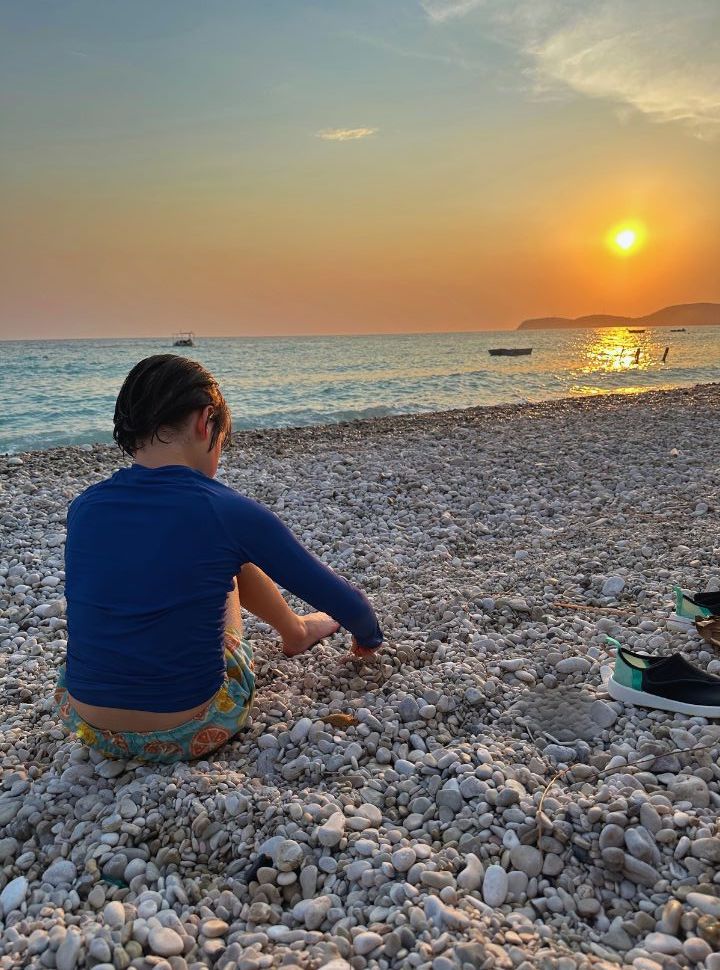
But we were traveling in the summer when temperatures hit a scorching 40°C (104°F). So, we stuck to the coast, chasing beach days, mostly because our kid loves the water, and there was no way he was trekking through the heat all day.
That means our experience was very much shaped by the high season along the Albanian Riviera. And let’s say we learned a lot.
So learn from our mistakes so you can do Albania right.
1. Albania is worth visiting in the low season
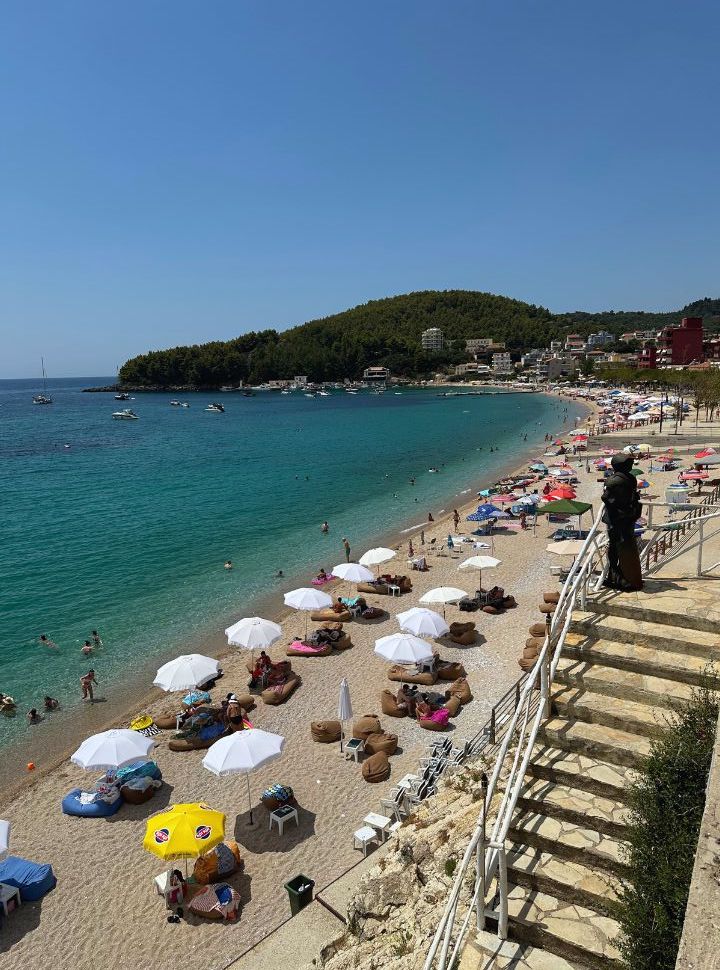
If there’s one piece of advice I could give you, it’s this: don’t visit the Albanian Riviera in July or August.
Those Instagram-perfect, empty beaches? They exist from September through June. Once peak summer hits, beach clubs and sunbeds take over. The Riviera transforms into a chaotic mix of traffic, crowds, and overpriced everything.
You’ll still see the concrete-heavy overdevelopment, but at least in the off-season, you can actually enjoy the beaches without the madness.
The summer months are also very hot by the way. Sometimes, it was too much to do anything but soak in the crystal clear ocean water.
Skip Ksamil in Peak Season
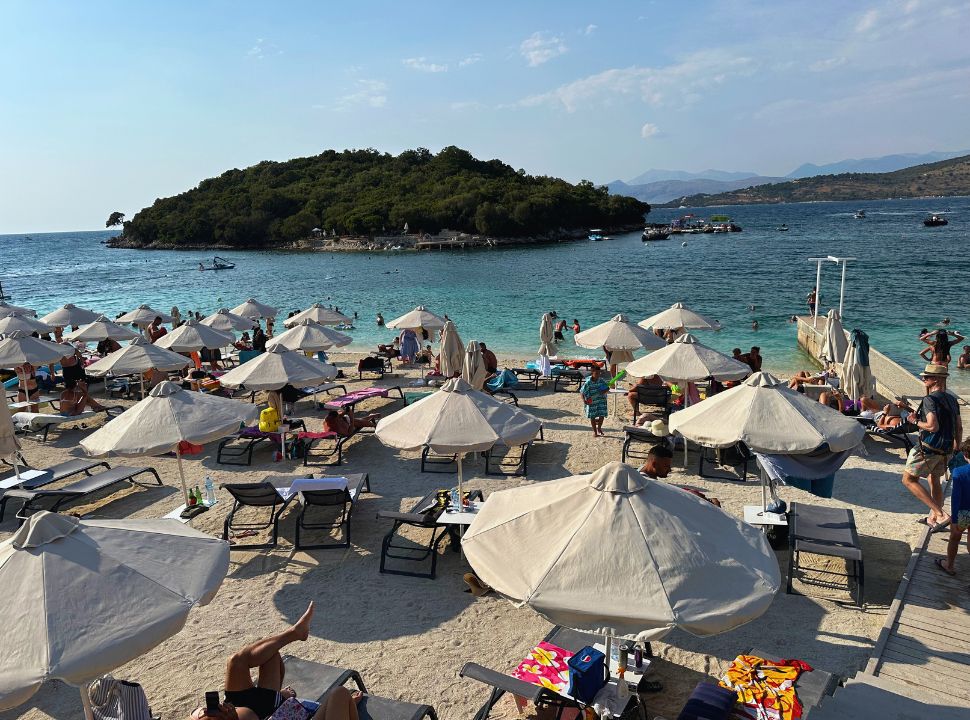
Ksamil looks like paradise in photos, but it’s a packed, overpriced mess in July and August. If you really want to see those dreamy white sands and turquoise waters, visit in the off-season, but even then, I wouldn’t stay too long.
The beaches look incredible without the crowd, but the Ksamil area is not very charming unless you stick to a resort and stay there to indulge.
So when is Albania worth visiting?
September and October are the best time to visit Albania. The crowds thin out, the weather is still warm, and the sea hasn’t lost its summer heat. Spring is also a great option with cooler temperatures, fewer people, and blooming landscapes.
2. Don’t Obsess Over the “Must-Visit” Beaches
If you plan an itinerary based on the most popular beaches, rethink that strategy. Yes, Albania’s beaches are gorgeous, but only when they aren’t packed.
Gjipe Beach? Not Worth the Hike in Summer
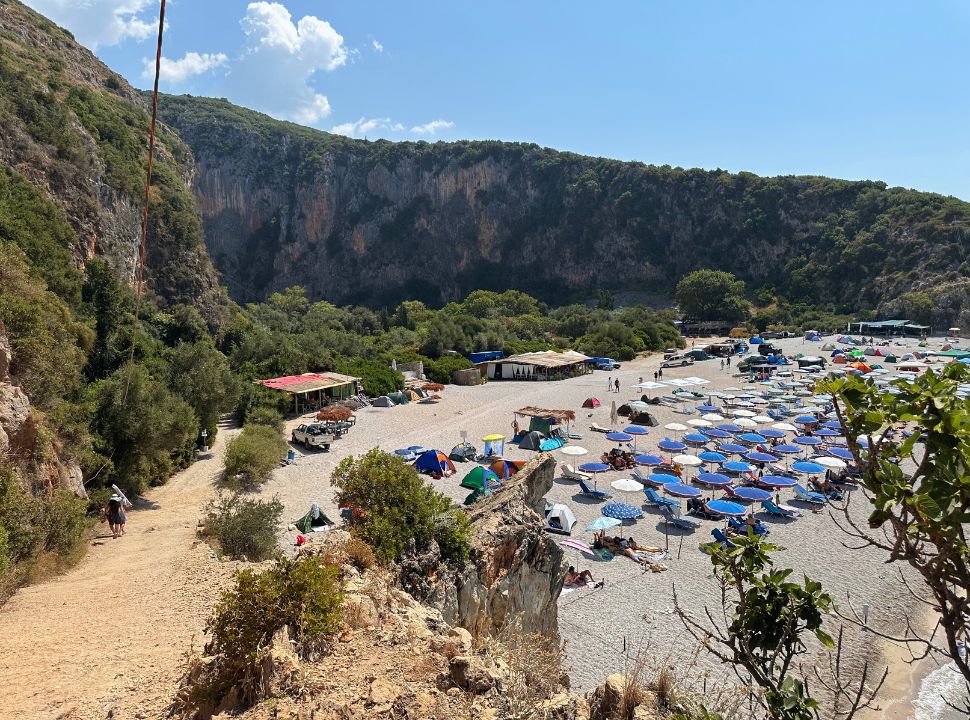
Gjipe Beach gets hyped, and it is stunning. But in peak season? It’s wall-to-wall sunbeds.
The tough hike is beautiful, but it’s a letdown when you finally reach the beach and can’t even find a quiet spot to sit.
Even Hidden Beaches Get Crowded
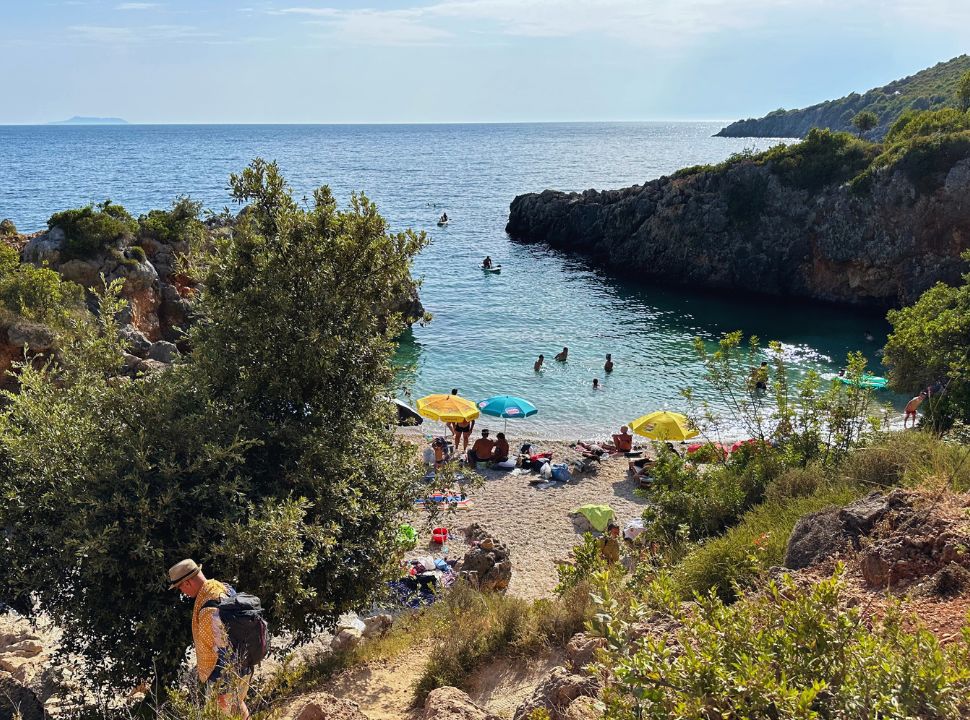
You’d think hard-to-reach spots like Aquarium Beach would be quiet, right? Nope. Even in high season, it was packed. During these months, everybody seems to be looking for the ‘secluded beach’ that they were ‘promised’
So which beach is worth visiting in Albania during the high season?
Instead of wasting time on the “must-visit” spots, walk to the far end of long beaches, there’s almost always a quiet stretch.
We found this in Dhermi (past the crazy traffic) and in Himarë at Potami Beach, where the water was refreshing and the crowds were minimal.
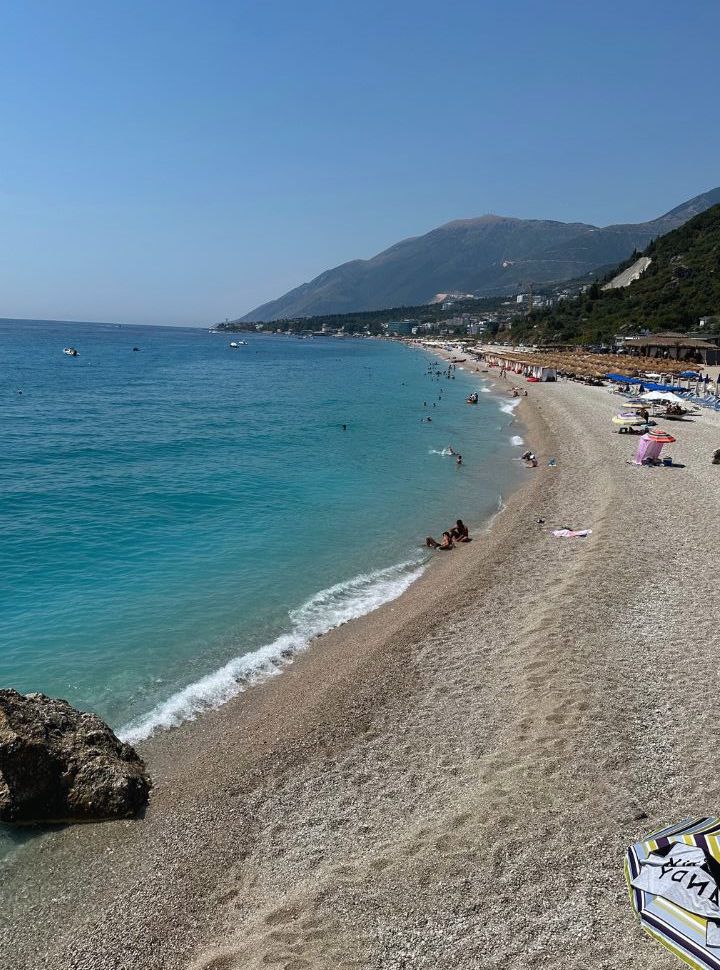
Also, head to the beaches not often found in the ‘top 5 best beaches in Albania’. Borsh beach is somehow not highlighted that much, but we had wonderful accommodation at a quiet spot at the beach and it was one of our best moments in Albania.
Other beaches are Buneci Beach, Livadi Beach, and Lukove beach.
3. Stay in Small, locally run Accommodations
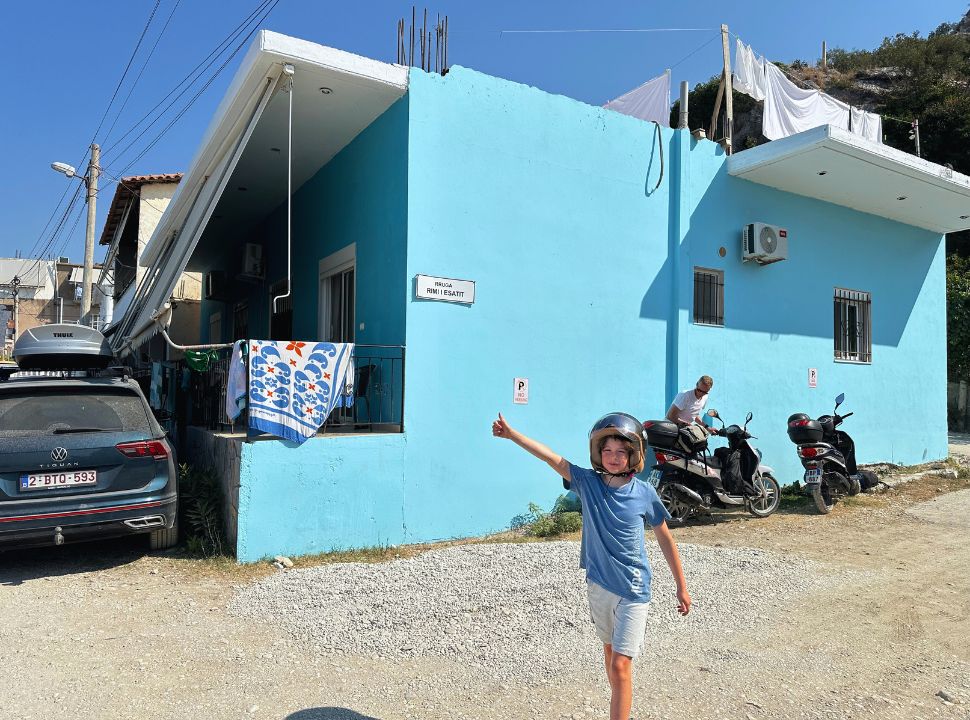
The number of (international) resorts is growing fast, but Albania still has a wealth of charming, family-run guesthouses and boutique stays.
These spots have more character and wonderful hospitality; your money supports local businesses. Win-win.
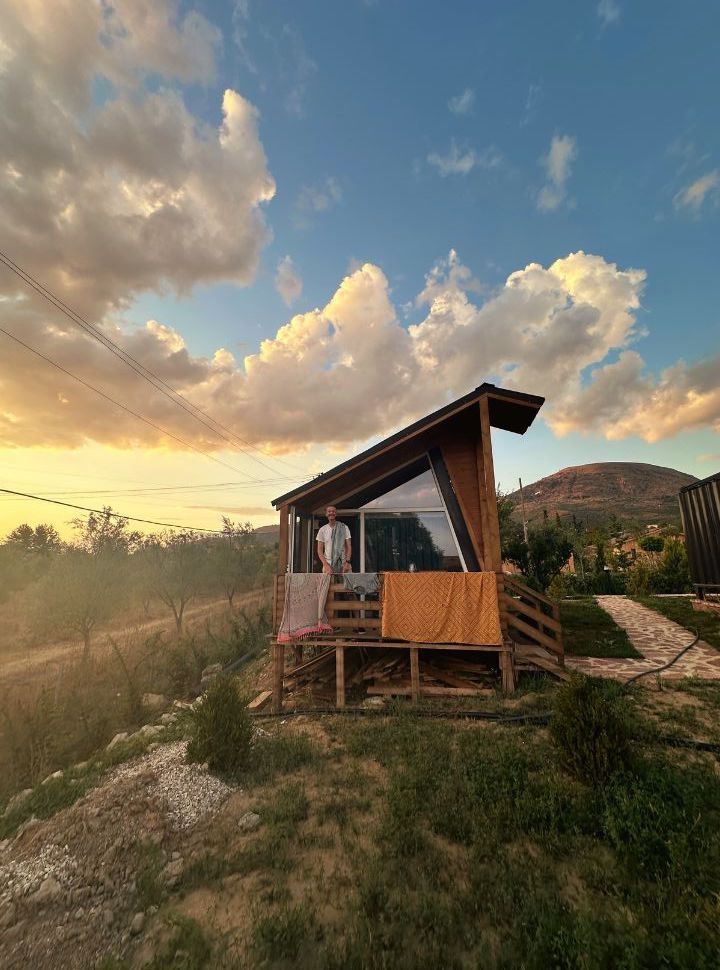
Also, stay near the sights and don’t go on day trips. We enjoyed our accommodation at Mesopotam near Blue Eye and our guesthouse Gjirokaster.
We initially considered driving from Sarande to visit these sights but were glad we didn’t.
4. Albania is worth visiting for budget travelers if…
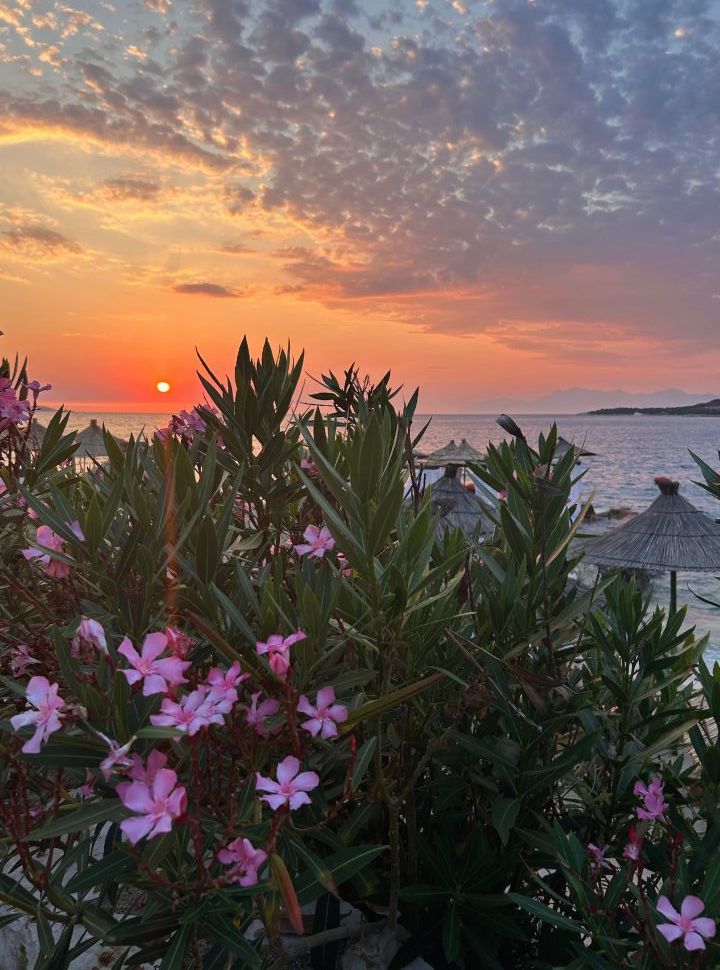
Albania can absolutely be budget-friendly if you stick to local restaurants and accommodations outside the main tourist hotspots.
Stay clear of places like Ksamil, Sarandë, and the beach clubs along the Riviera, where prices skyrocket during peak season.
Is Albania worth visiting on a budget?
For the best deals, visit in the off-season. Accommodation prices can drop by more than half compared to summer rates.
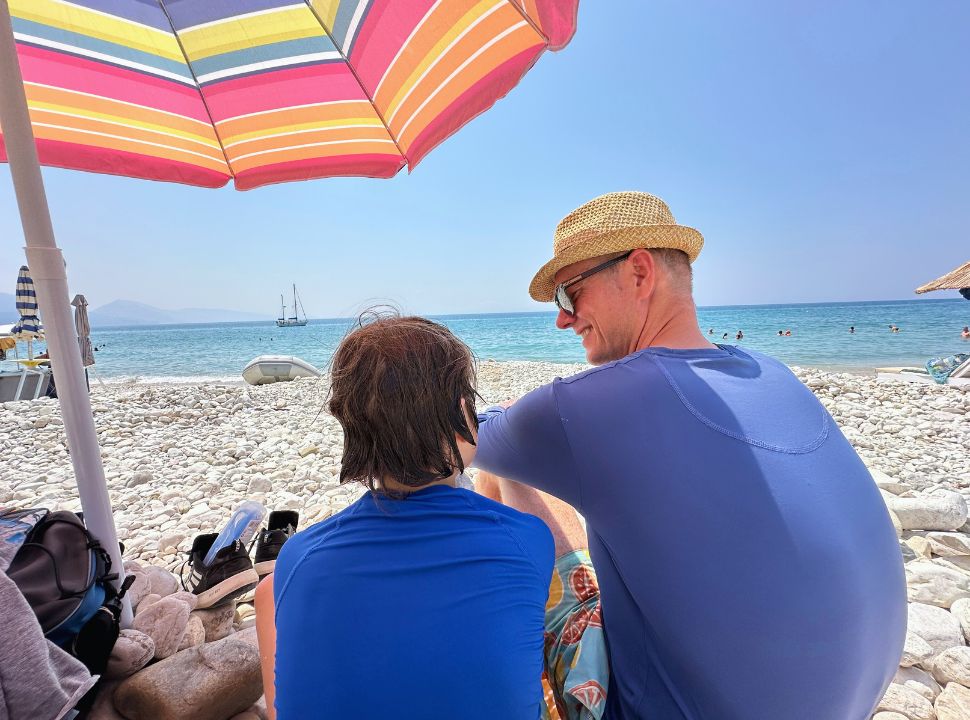
Of course, if you’re not visiting Albania for its affordability but simply because it’s an incredible destination, feel free to ignore this tip and just enjoy the experience!
Tip: Renting a sun lounger every day at the beach can get pricey. Opt to buy a sun umbrella at one of the shops and head to the public beach.
5. Don’t want to rent a car? Do this instead
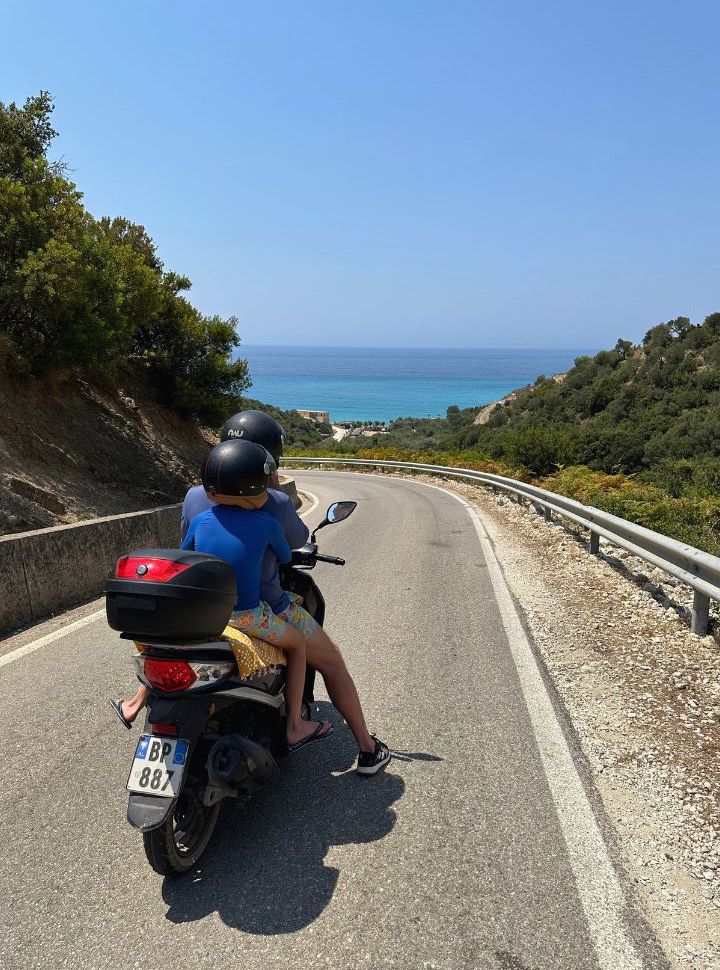
If you don’t want to rent a car for your entire trip, consider renting one at each major destination. In places like Himarë, we saw scooter rentals, which made it incredibly easy to visit the Himarë Castle and nearby beaches like Gjipe and Livadh.
Having your own ride saves you time, hassle, and a lot of walking, especially when public transport options are unreliable. Plus, you can explore at your own pace, stopping wherever you want instead of being stuck on a bus schedule.
Plus, it is just too hot in the summer for walking miles on end. Beaches are often a 30-minute or more walk from the main road. We saw many people walking to the beach in the sizzling sun, which was unbearable.
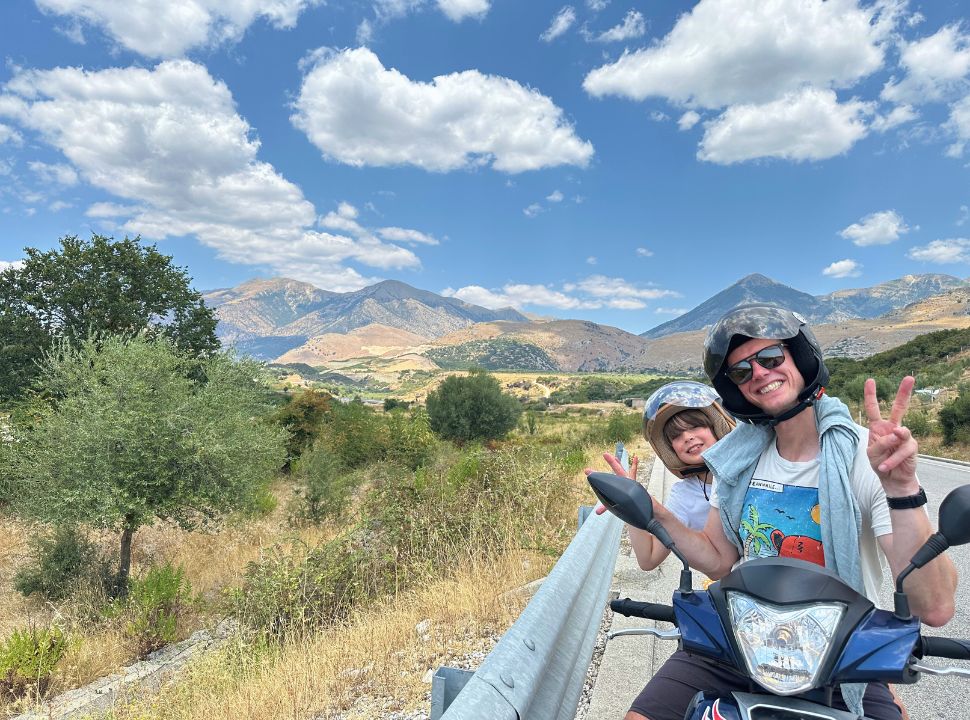
If you are staying in Sarandë or Ksamil area and want to visit the Blue Eye and Gjirokastër, don’t hop on a bus for just a day. Instead, rent a scooter and enjoy a scenic drive to the Blue Eye and Gjirokastër.
You can drive a loop and the mountain road is absolutely incredible.
Spend a night in Gjiorkaster to make this mini-road trip comfortable. The roads are really good and straightforward.
6. Albania is worth visiting if you mix things up
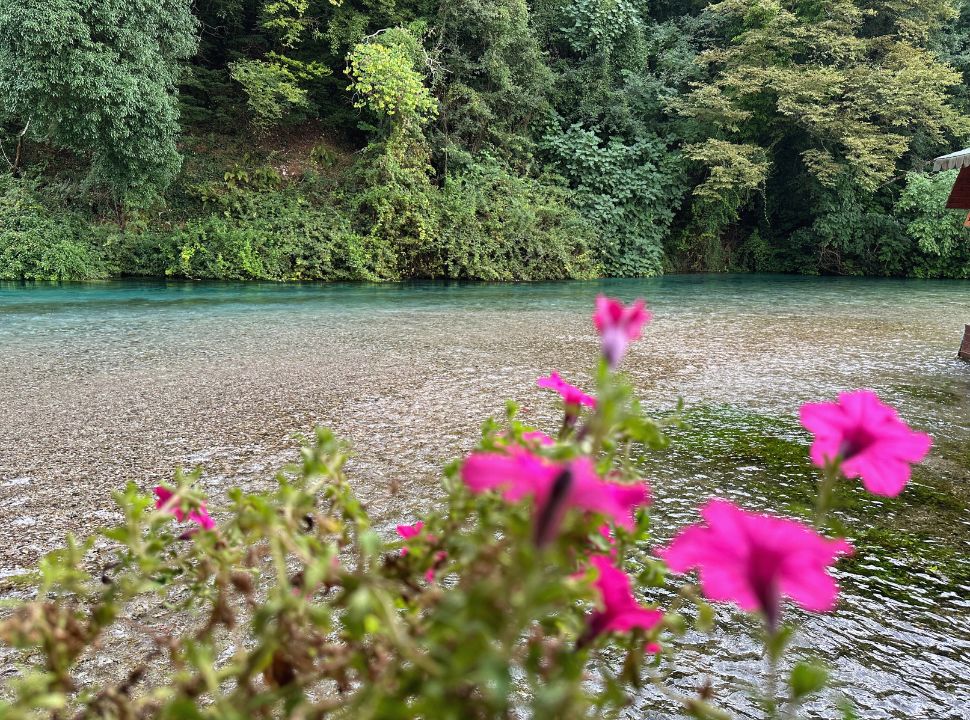
If you want to experience Albania, balance your itinerary. The beaches are great, but the mountains, villages, and historical sites? That’s where you’ll find the real Albania.
Our next road trip will do something different.
Albania is definitely worth visiting if you at least take this suggested itinerary in mind:
Albania 10 Day Itinerary (Road Trip)
Day 1 Tirana-Shkodër (2H)
Upon arrival at Tirana, head to Shkodër, the gateway to the Albanian Alps.
To get there rent a car at the airport. Confirm at your guesthouse in Shköder that your transportation to Fiërze is arranged.
Day 2 Shkodër-Valbona by mini-bus & ferry
Leave your car behind at your guesthouse. Parking at Fiërze is minimal, and you don’t want to leave it overnight while you go hiking, plus the trail ends in Teth.
In Fiërze grab the Komani Lake Ferry to Valbona. Once at your accommodation, enjoy the view and rest for tomorrow’s hike.
Day 3 Valbona – Teth on foot – Shköder
Hike the stunning Valbona-Theth trail. The guesthouse in Shköder has arranged a pick-up for your trip back from Teth to the guesthouse and your car.
Day 4 Shköder – Berat (3H)
Head to the Berat early in the morning so you can fully enjoy this UNESCO Heritage Site
Day 5 Berat – Albanian Riviera (3H)
Once you are ready to leave Berat, drive towards the Albanian Riviera. Make sure to take the Llogara Pass and make a pit stop at Dhermi Old Town. From there choose a place to stay such as Himare or Borsh Beach.
Day 6 Albanian Riviera
Explore the beaches and check out Himara Castle in the late afternoon.
If you are in the low season you can choose Ksamil for one night so you can also visit Butrint National Park.
Day 7 Albanian Riviera – Gjirokastër (1h30)
Before heading to the Gjirokastër, make a stop at the stunning Blue Eye in Muzinë.
Day 8 Gjirokastër
Wake up early and explore the quiet streets of Gjirokastër before the day trippers arrive. Towards the afternoon walk to the Ali Pasha Bridge, the walk will take you through town and an amazing valley
Day 9 Gjirokastër – Tirana (3H30 )
Explore Dhermi Old Town in the morning before continuing to Tirana. It’s a loop so once you are back at the tunnel, travel back to Tirana and drop off your car.
Day 10 Tirana-Airport
Depending on what time your flight leaves, explore Tirana town before heading to the airport
Alternatives for the 10 days Albania road trip:
- If you don’t want to rent a car for the first three days (as you won’t be driving much) buses leave from Tirana Airport to Shköder 4 x a day ( around €9 at 11:15 AM, 12:45 PM, 5:30 PM and 8:10 PM.
If the times don’t match your flight arrival time, you can also take a taxi to Shköder (around €80) and go by bus back to Tirana airport. From there pick up your rental car. - You can also choose for a guided tour from Tirana to the Theth-Valbona Trail. If 3 days is too long, they also offer wonderful day trips from Tirana.
- If you happen to do this itinerary in summer (which we don’t suggest, but you don’t always have a choice, right?) you can also take a ferry from Fiërze to Shala River first, spend a night, and then on the next day go along the Komani Lake to Valbona. this will cost you an extra day. Small boats to Shala River only run in the summer months.
- If you have more time you can spend another night in the Teth, hike to the Blue Eye Teth (3H) also known as Blue Eye Kaprre. Ask your guesthouse in Shköder for pick up from there.
- We chose to go clockwise after visiting Baret so you will always have the stunning coastal views on your right side when driving. However, if you prefer to go the other way, travel from Baret to Gjirokastër and onwards to the Albanian Riviera.
Final Thoughts: Is Albania worth visiting
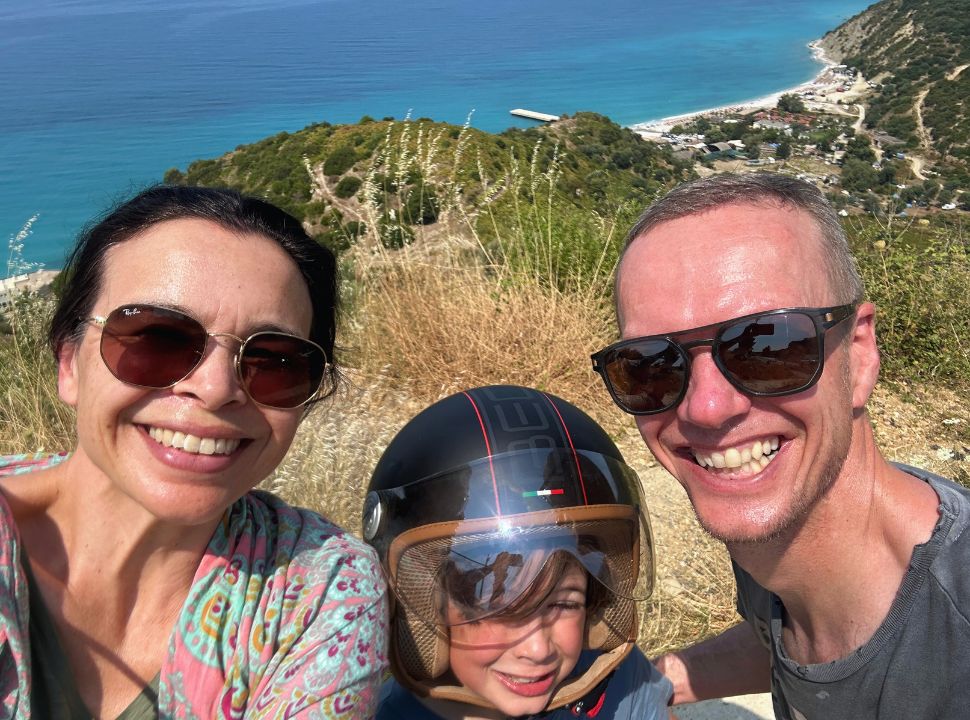
As you can tell, Albania has left an impression on us. It’s an exciting destination, especially for those who love nature and history. The mountain vistas are ideal for hikers, while the ancient towns are the place to witness the rich history.
Is Albania worth visiting again? Absolutely. Despite our initial expectations, we did enjoy our trip to Albania. The coastal route is the highlight, with each town and beach offering something different.
But, sadly, Albania has chosen overdevelopment and commercialization over careful planning. With the vast resorts popping up along its beaches, you can only wonder about sustainability and long-term viability. While they might be attractive for some, it is hard to imagine them as the ideal holiday escape.
I hope Albania can find a balance between preserving its natural beauty and cultural heritage and the rise of mass tourism. Let’s hope it learns from the mistakes of other tourist destinations that lost their charm due to overdevelopment.
Pin It For Future Reference
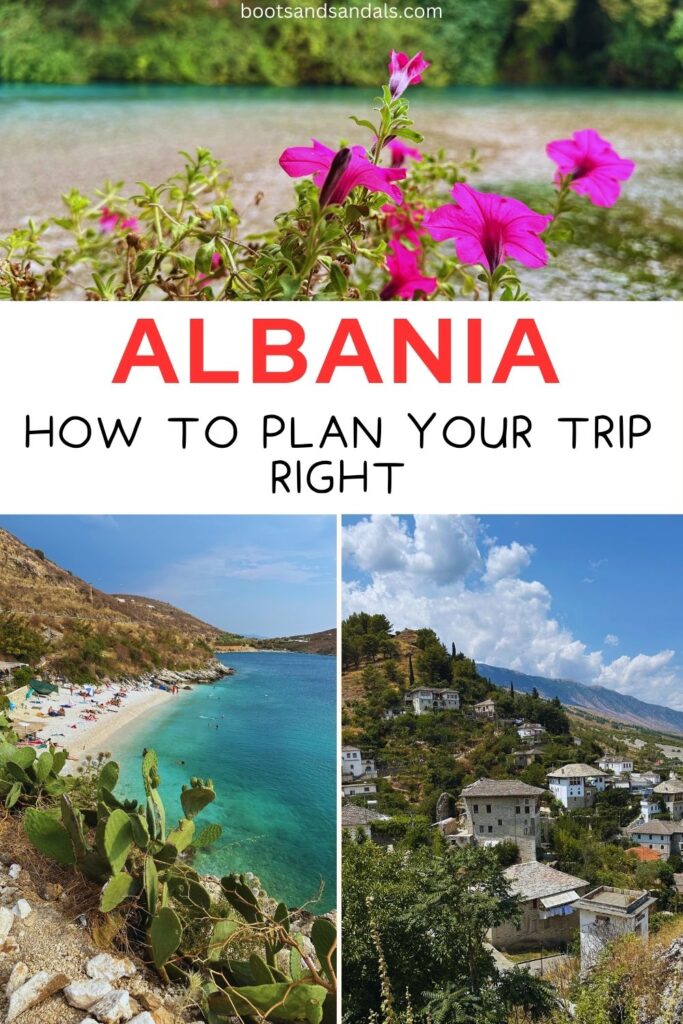
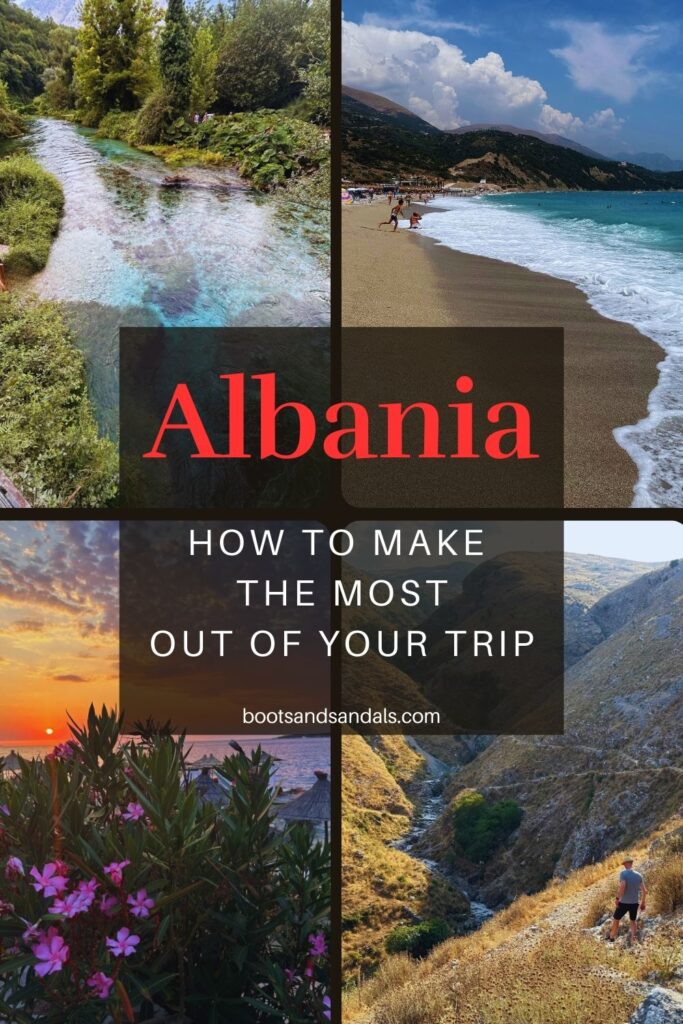
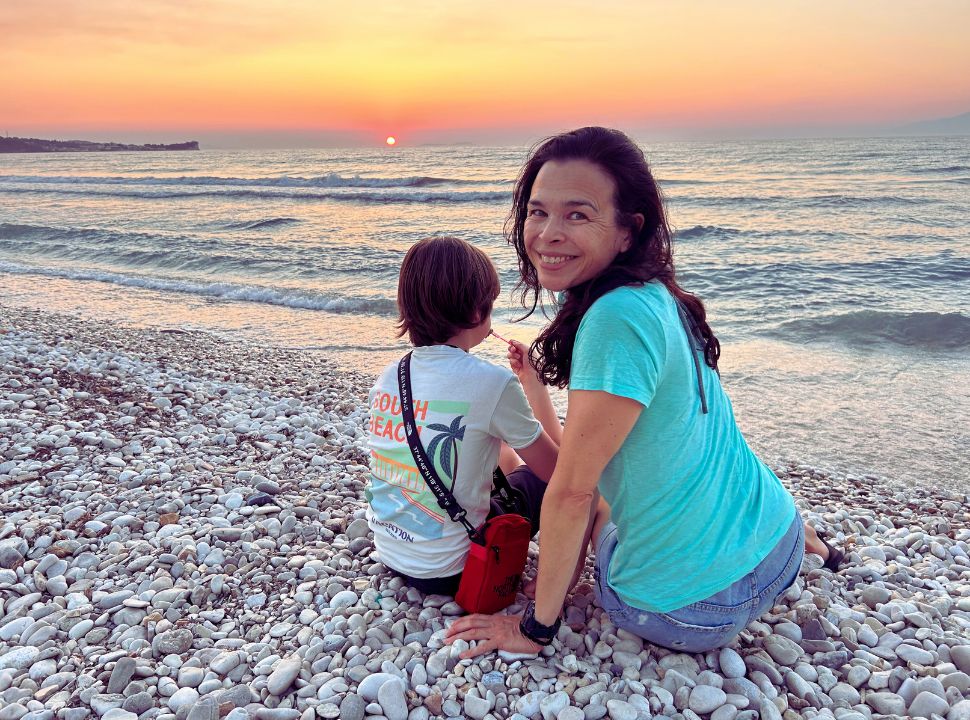
Monico was born in Kuwait and grew up in Indonesia, Malaysia, and Australia, which gave her a unique perspective on the world from a young age. Her first solo travel experience took her to Indonesia, where she volunteered at an orangutan rehabilitation center, and since then, she has focused her travels on environmental and conservation projects in places like Panama and Australia. Along with her love for wildlife, Monico enjoys exploring historic European cities, swimming in the sea, and tasting street food in Asia.
